orthos logos
Atlas of Infrastructure III
2018
As I noted above, infrastructures are largely responsible for the sense of stability of life in the developed world, the feeling that things work, and will go on working, without the need for thought or action on the part of users beyond paying the monthly bills. This stability has many dimensions, most of them directly related to the specific nature of modernity.
Among these is systemic, society-wide control over the variability inherent in the natural environment. Infrastructures confer the abilities to (for example) regulate indoor temperatures, have light whenever and wherever we want it, draw unlimited clean water from the tap, and buy fresh fruits and vegetables in the middle of winter. Another is control of time and space: to work, play, and sleep on schedules we design, to communicate instantaneously with others almost regardless of their physical location, and to go wherever we want at speeds far beyond the human body’s walking pace. These capacities allow us, and perhaps compel us, to approach nature as a consumable good, something to be experienced (or not), as and when we wish (Nye 1997). Infrastructures constitute an artificial environment, channeling and/or reproducing properties of the natural environment which we find most useful and comfortable, providing others which the natural environment cannot, and eliminating features we find dangerous, uncomfortable, or merely inconvenient. In so doing, they simultaneously constitute our experience of the natural environment, as commodity, object of romantic/pastoralist emotions and aesthetic sensibilities, or occasional impediment. They also structure nature as resource, fuel, or “raw material,” which must be shaped and processed by technological means to satisfy human ends.
Thus to construct infrastructures is simultaneously to construct a particular kind of nature, a Nature as Other to society and technology. This fundamental separation is one key aspect of Latour’s “modernist settlement.”
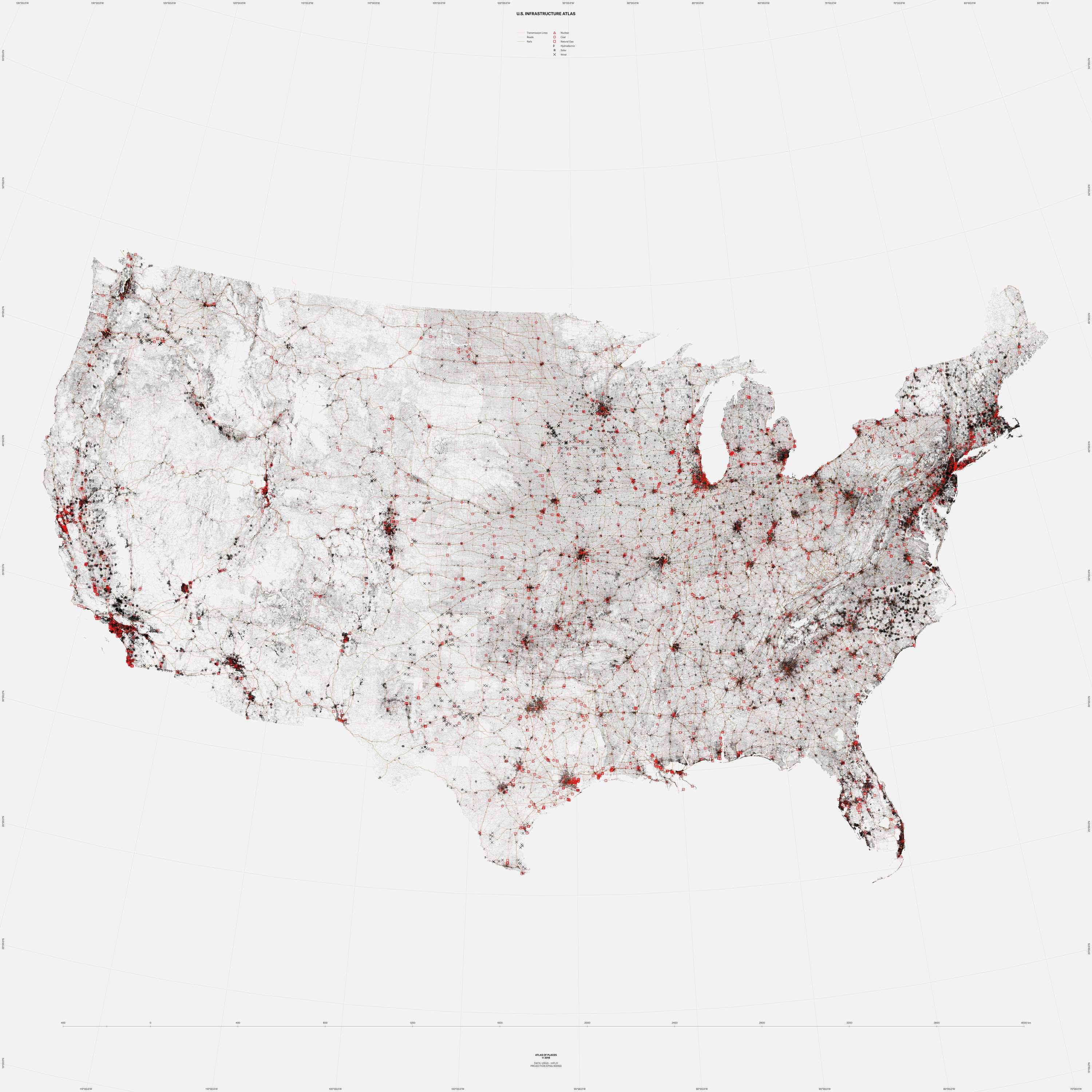
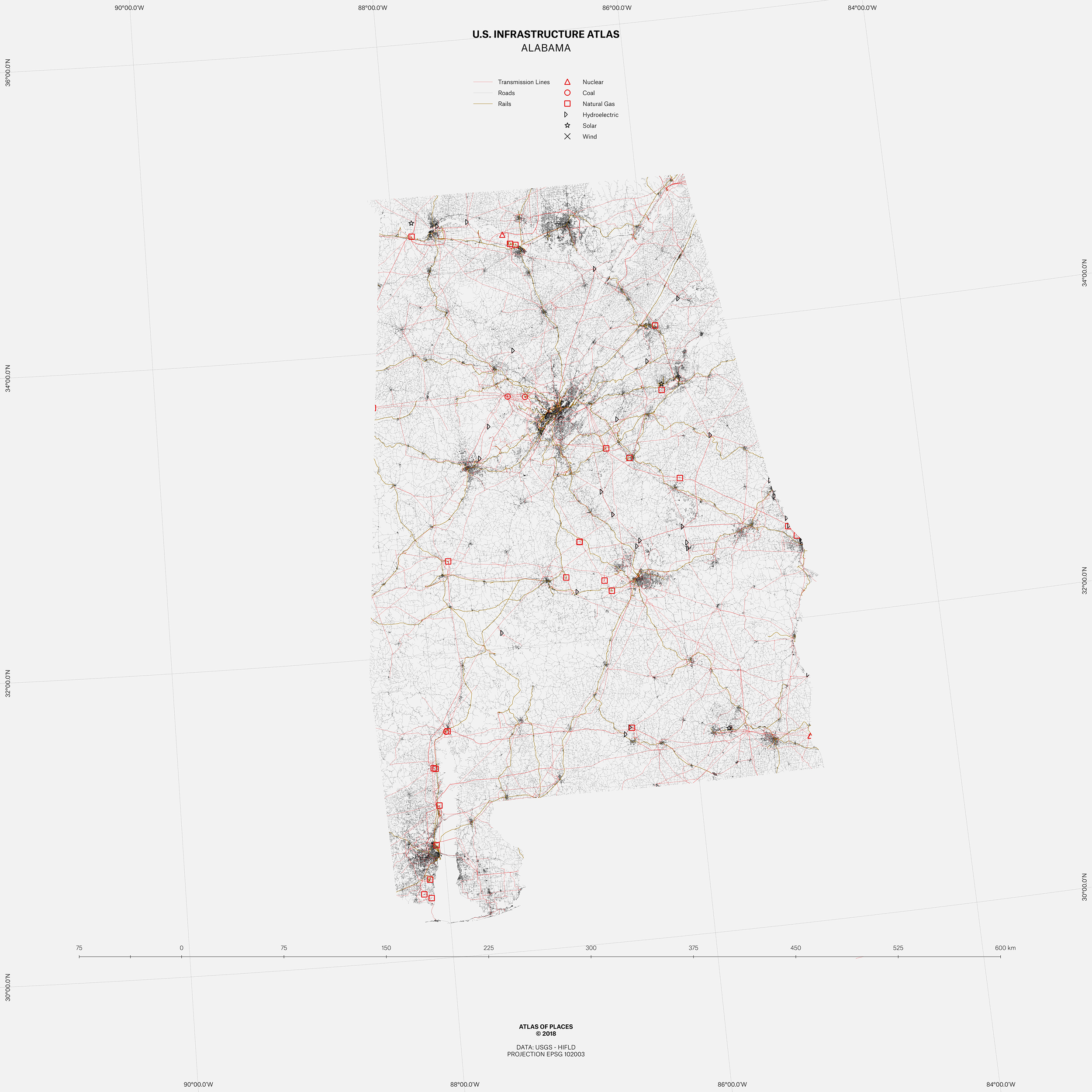
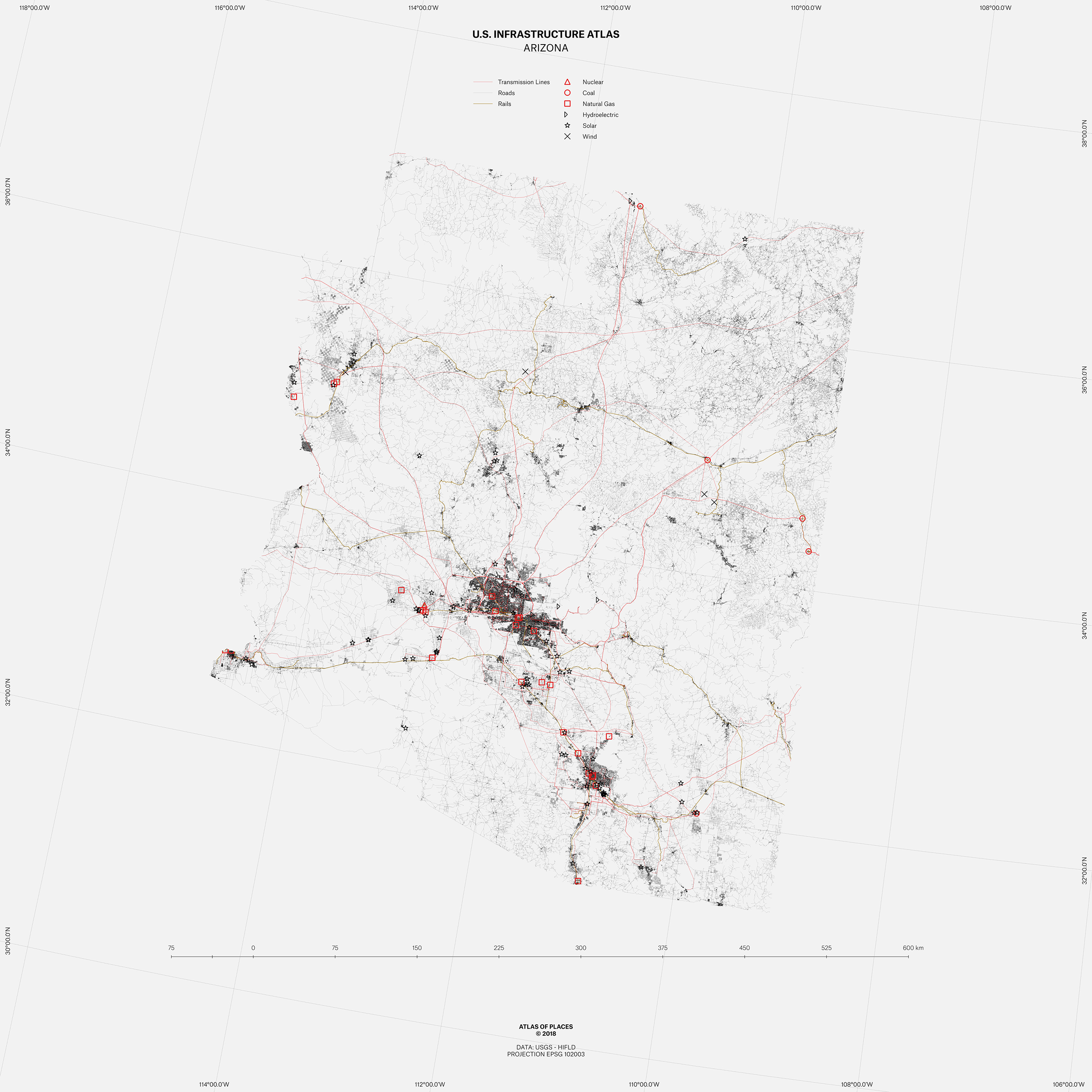
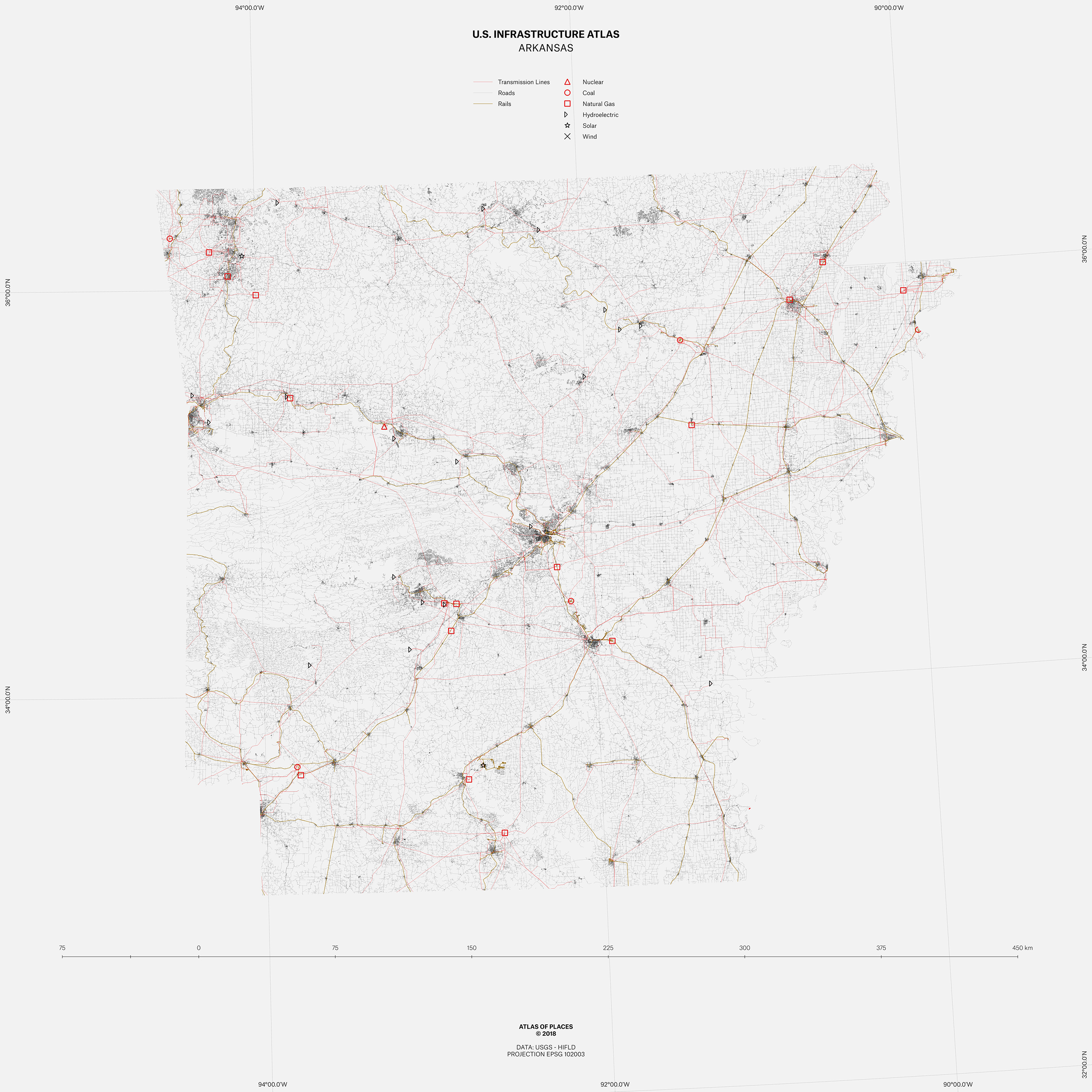
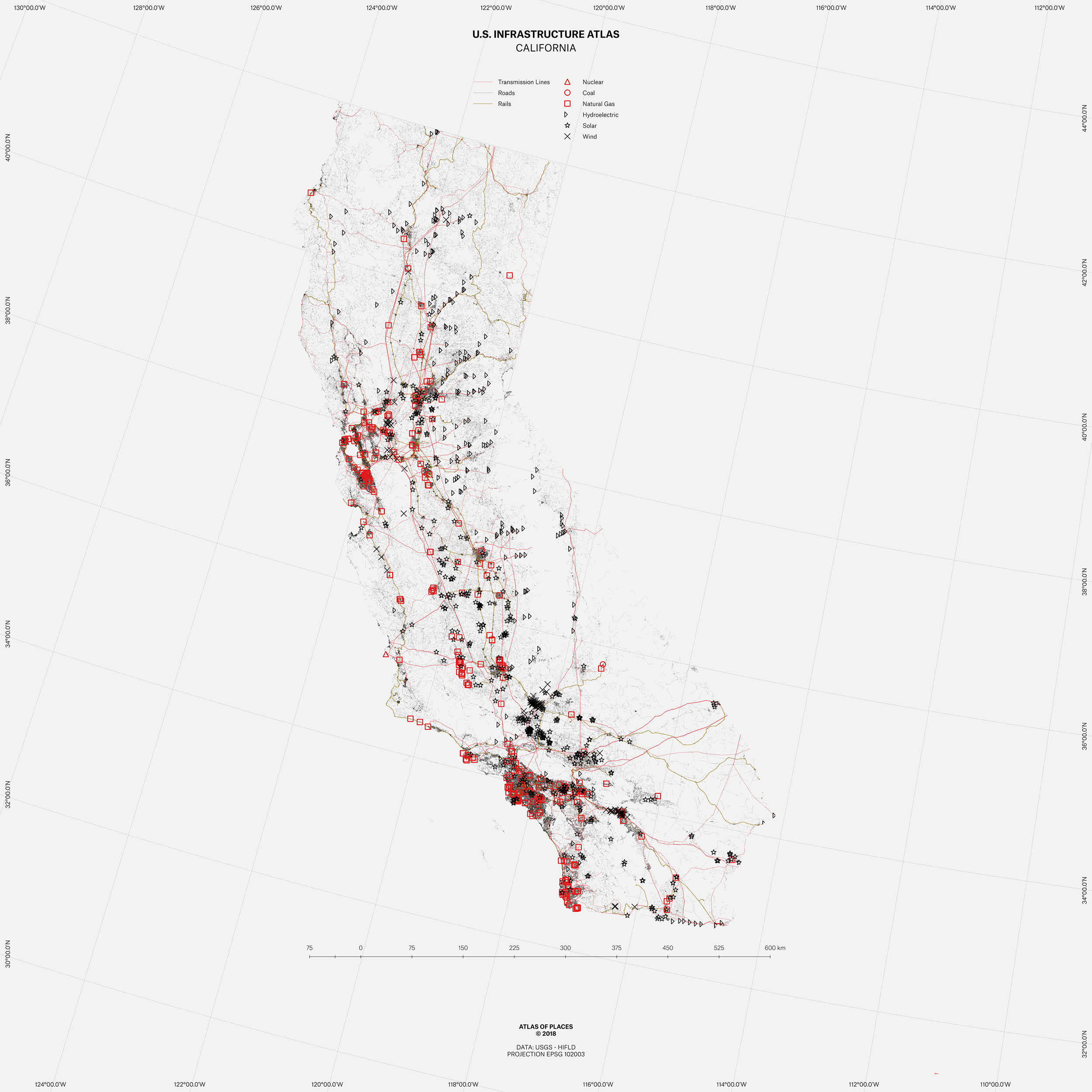
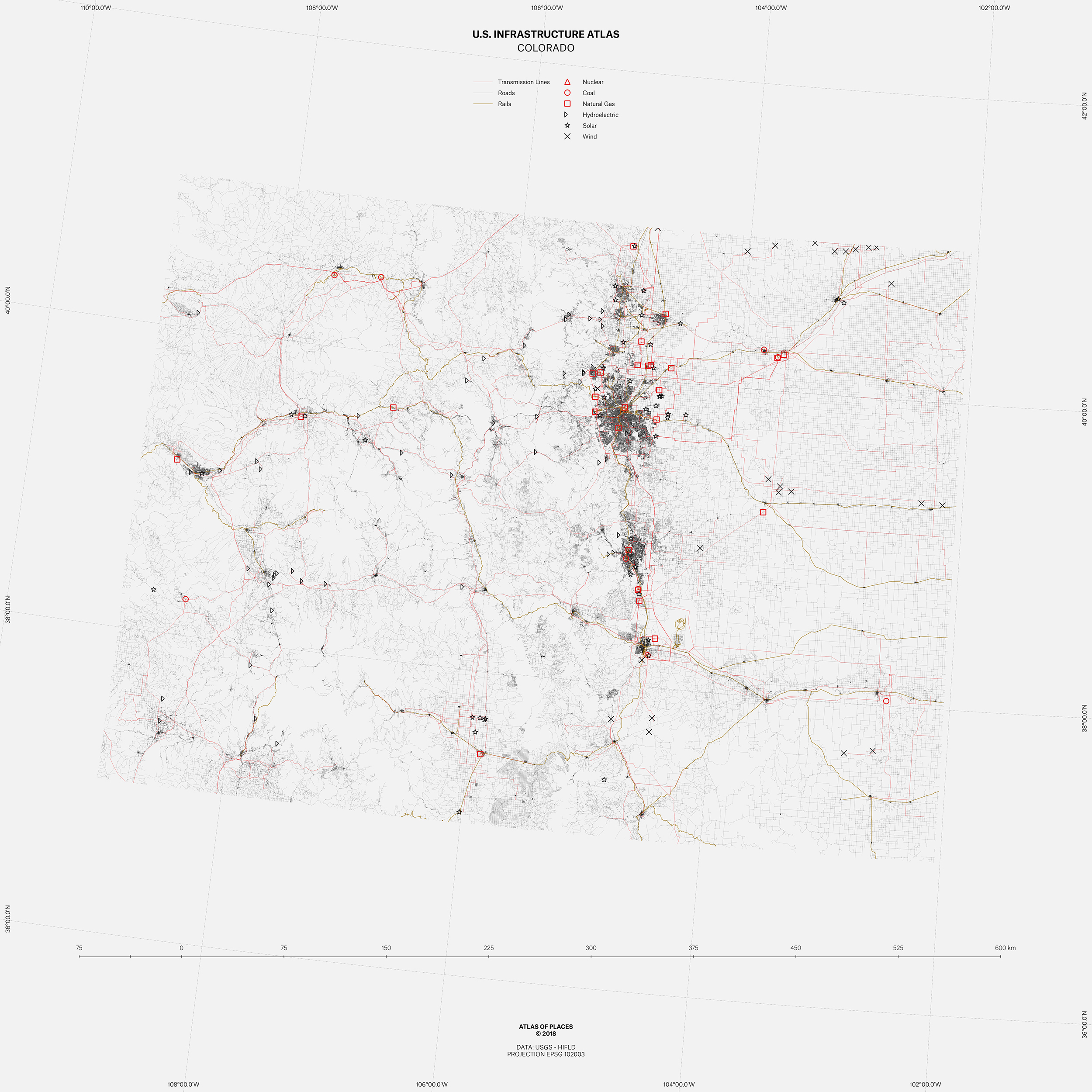
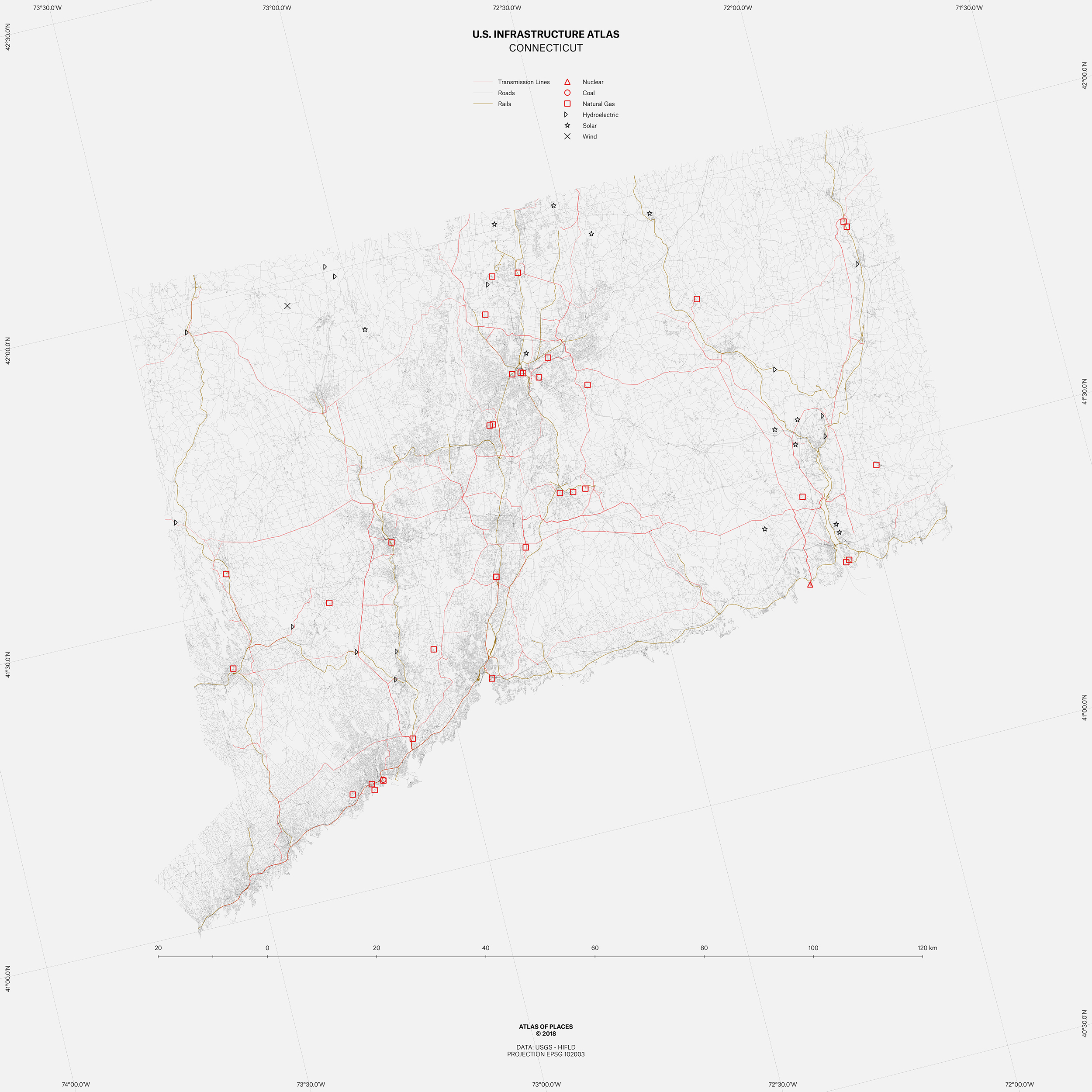
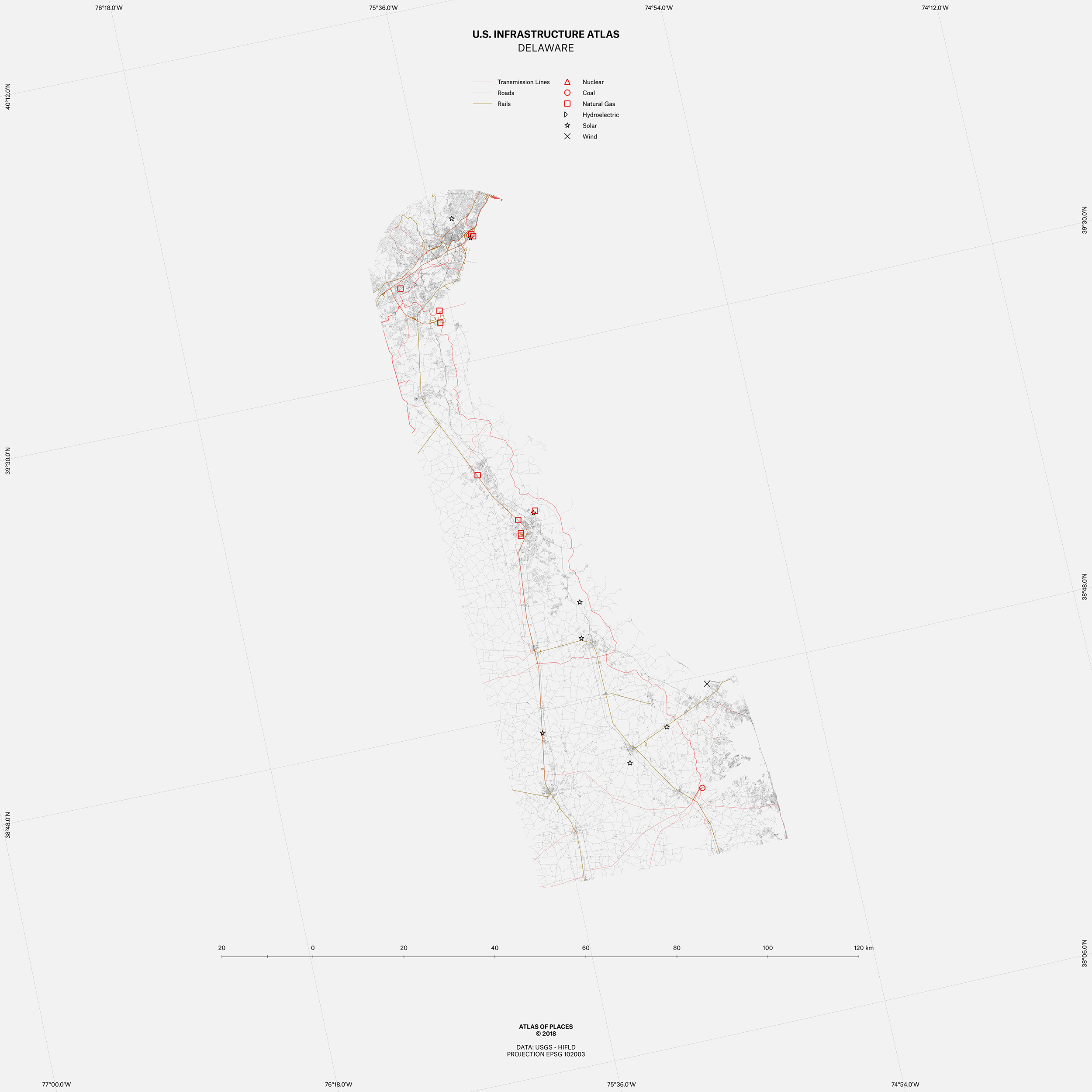
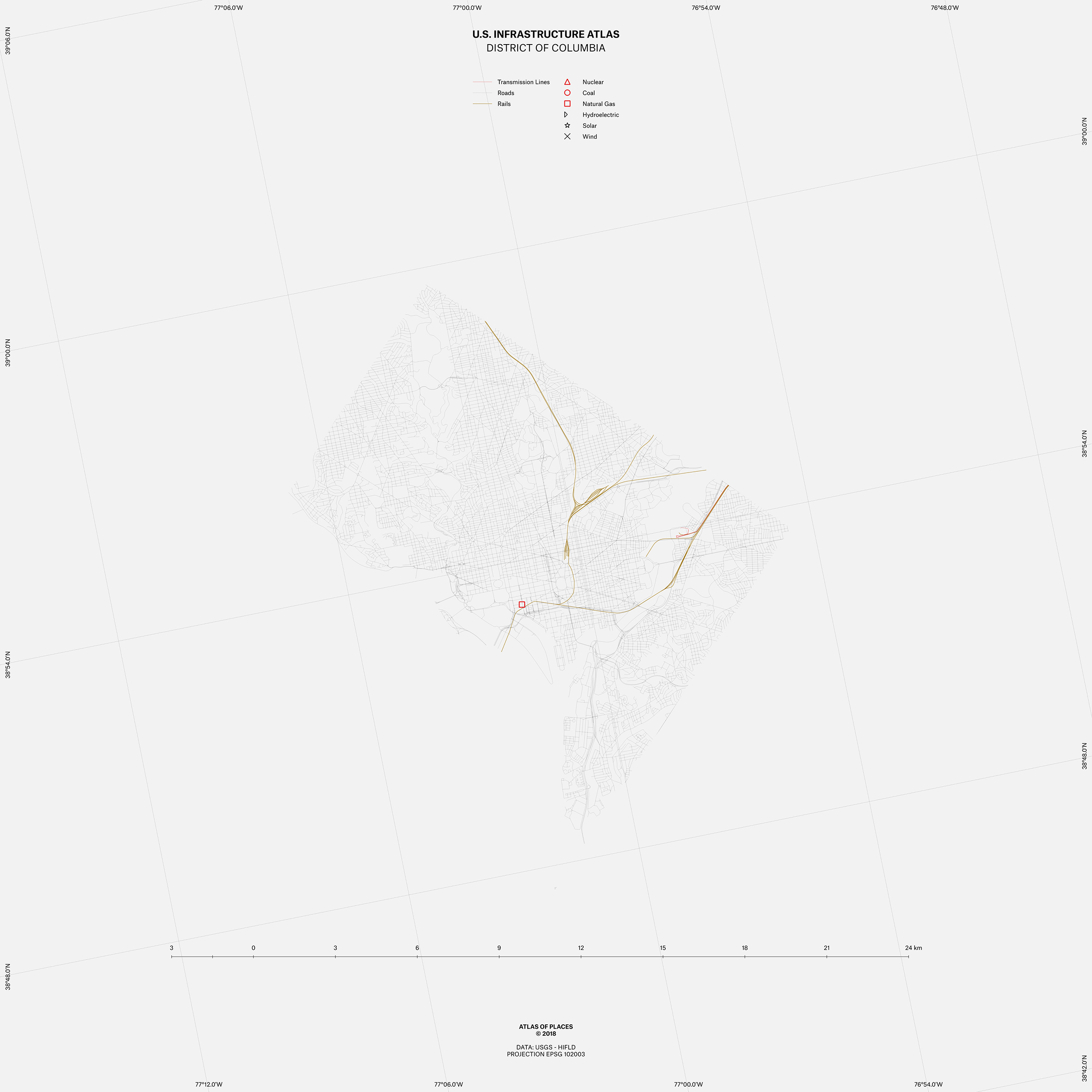
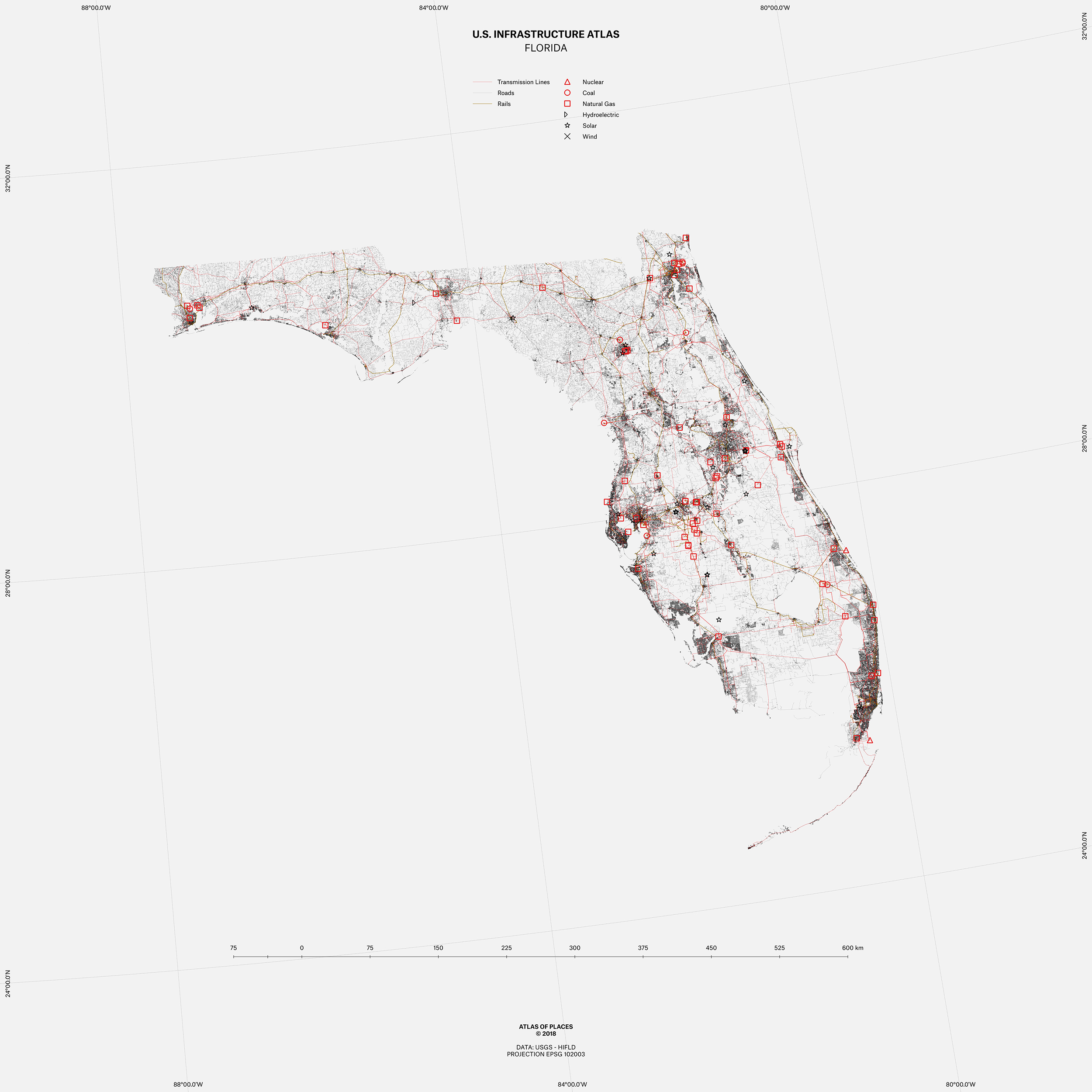
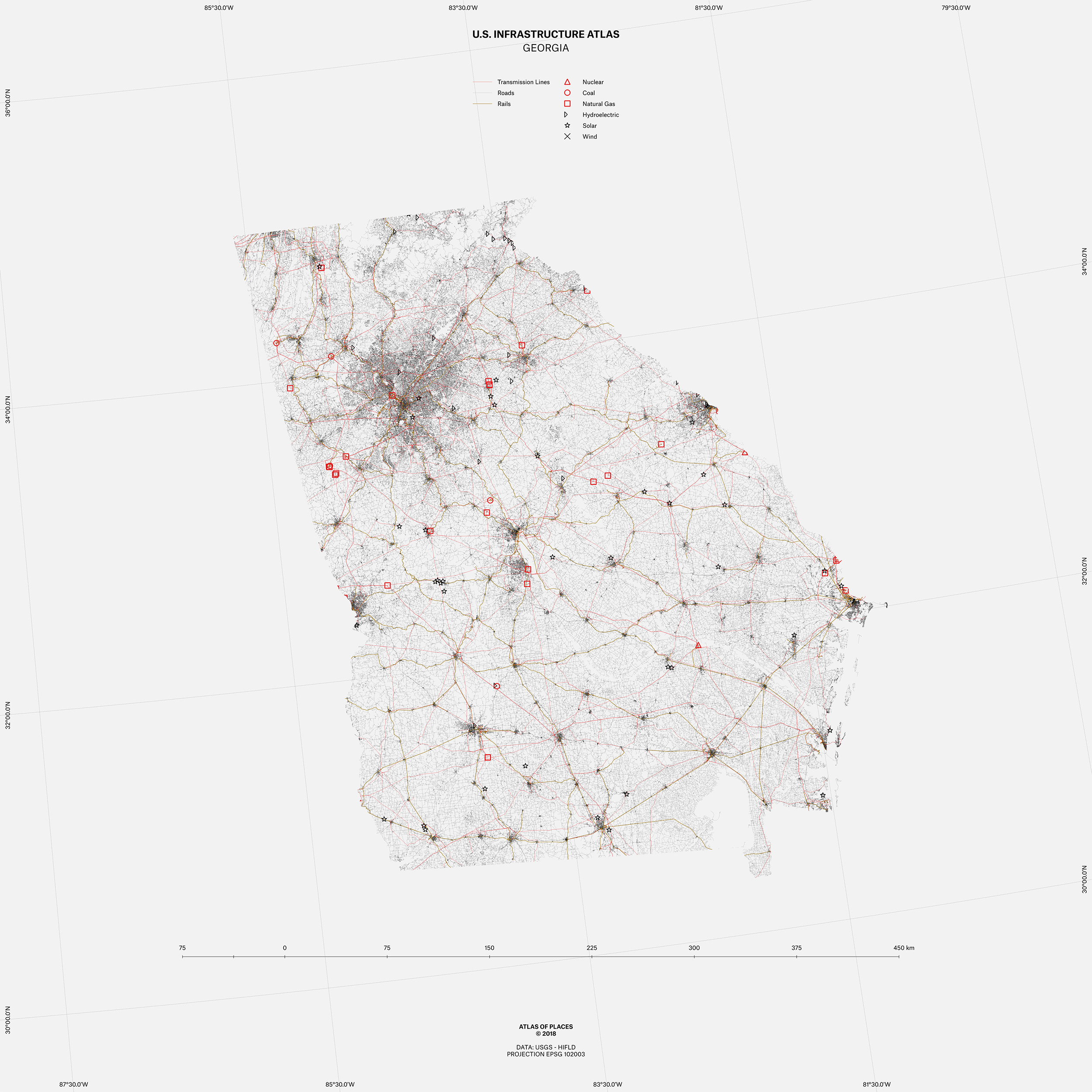
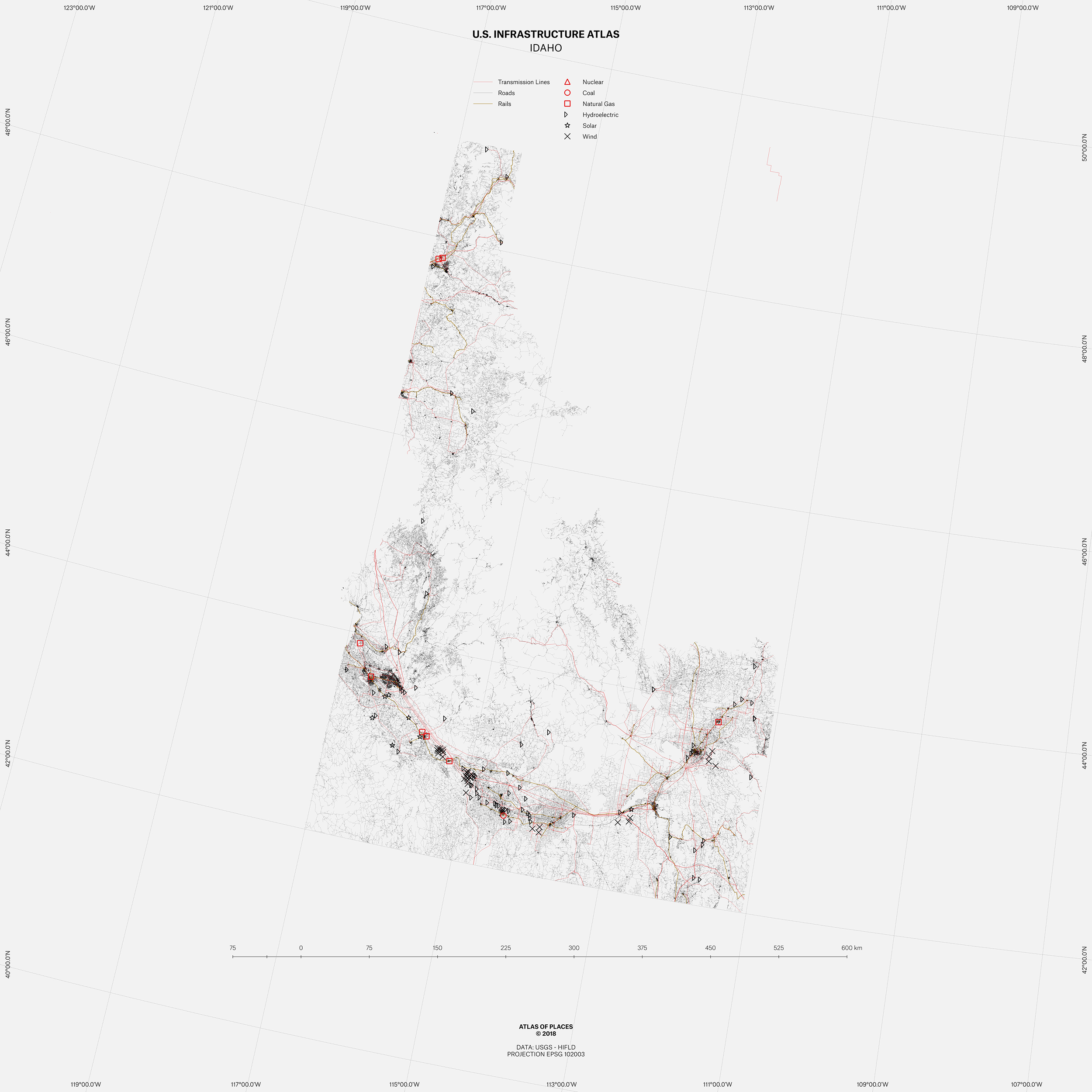
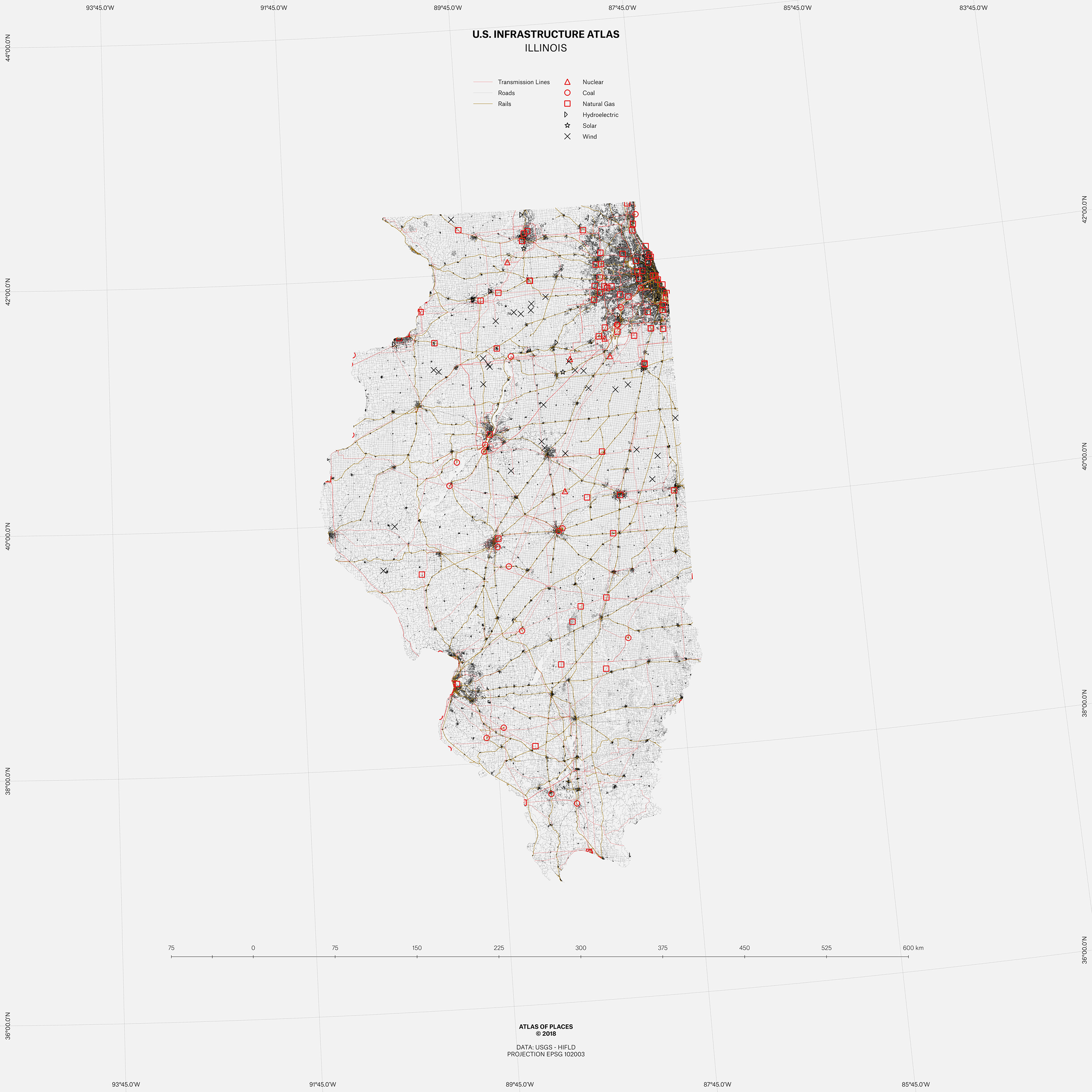
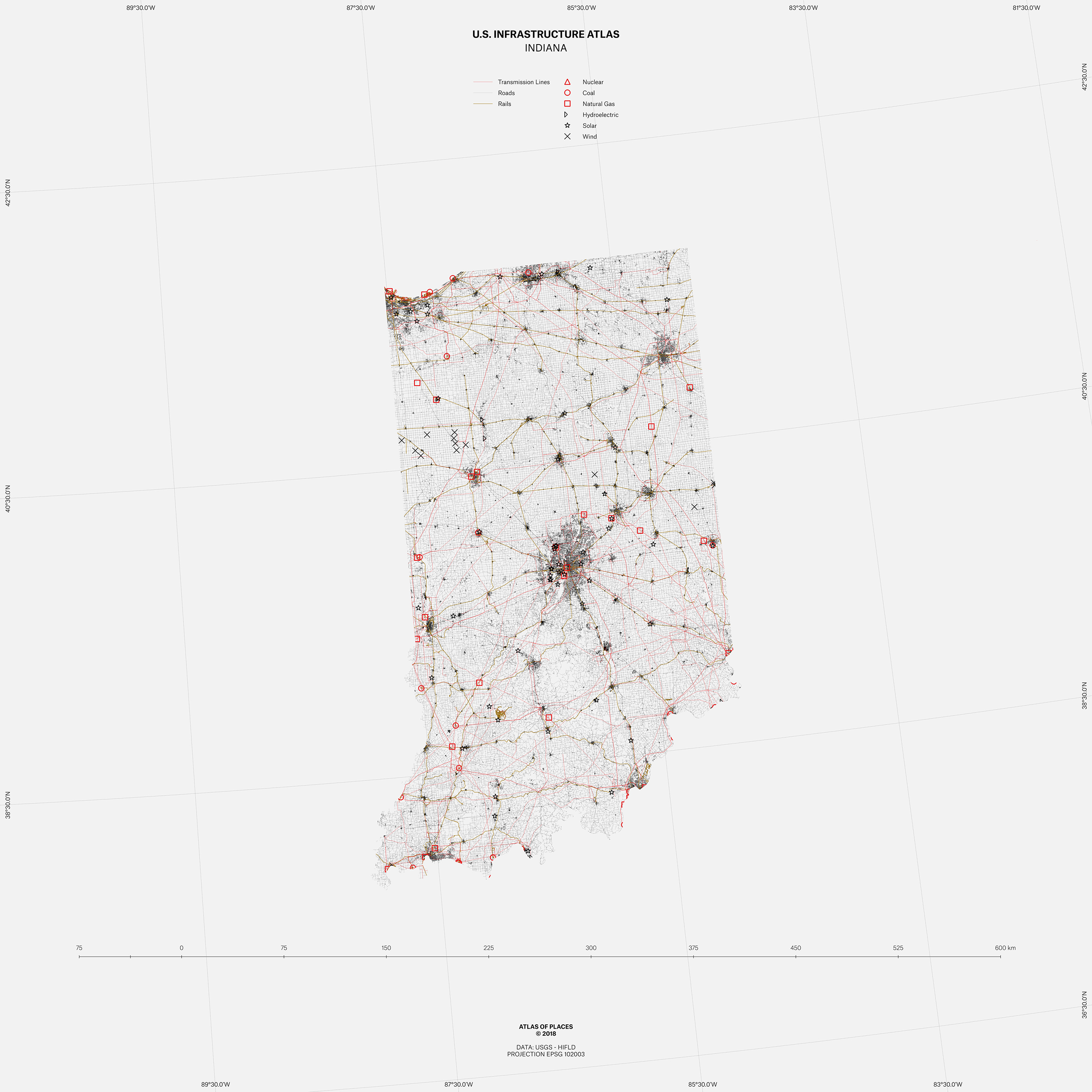
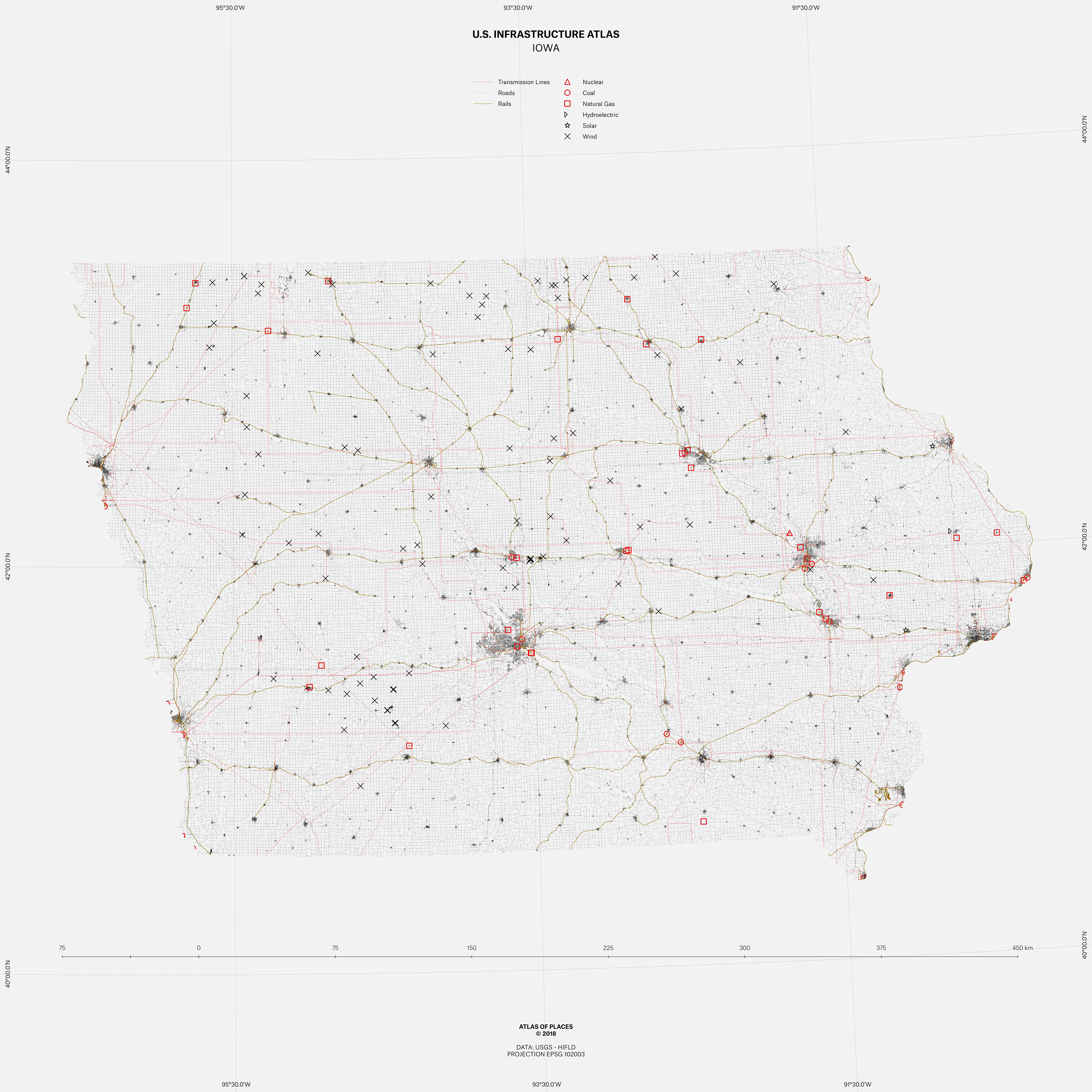
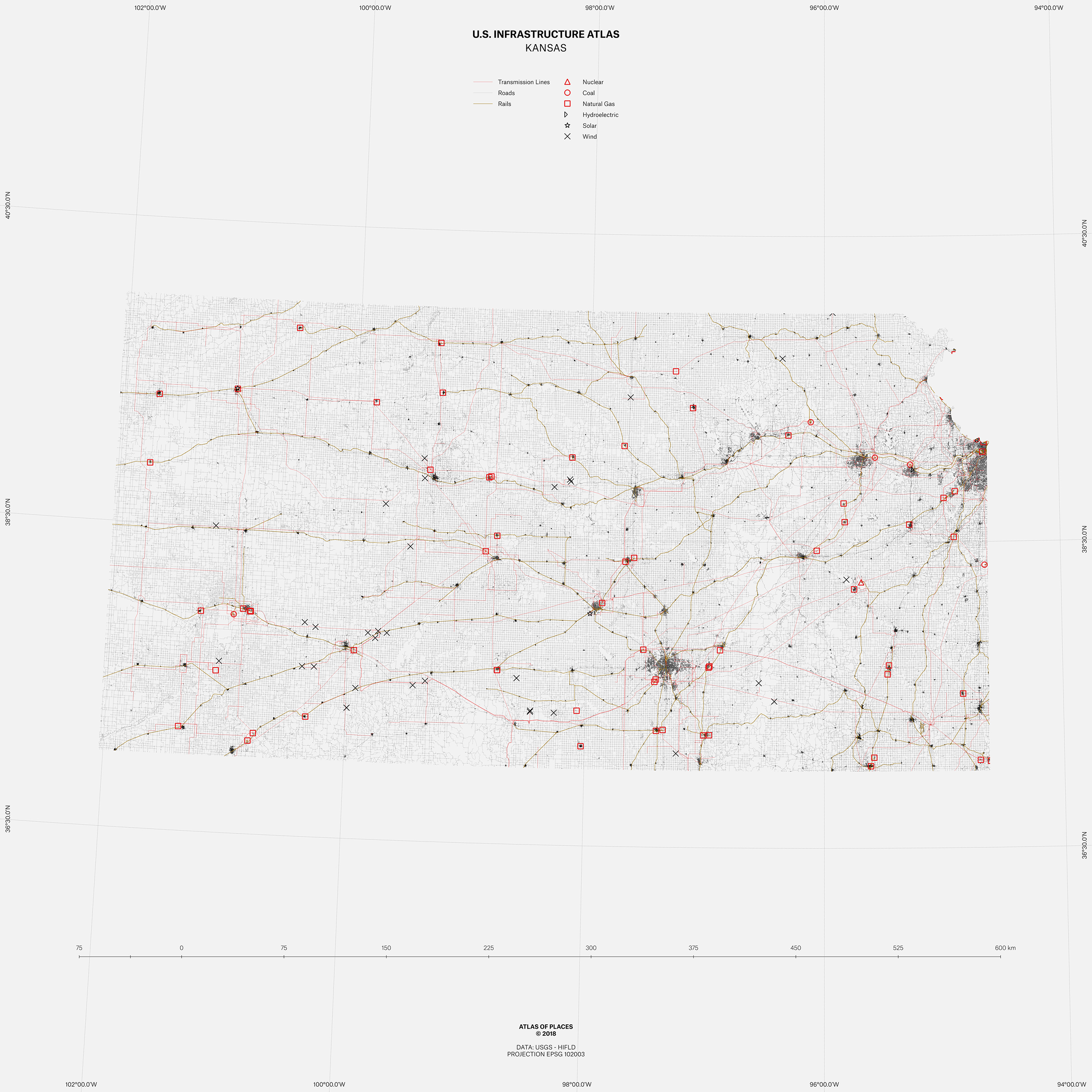
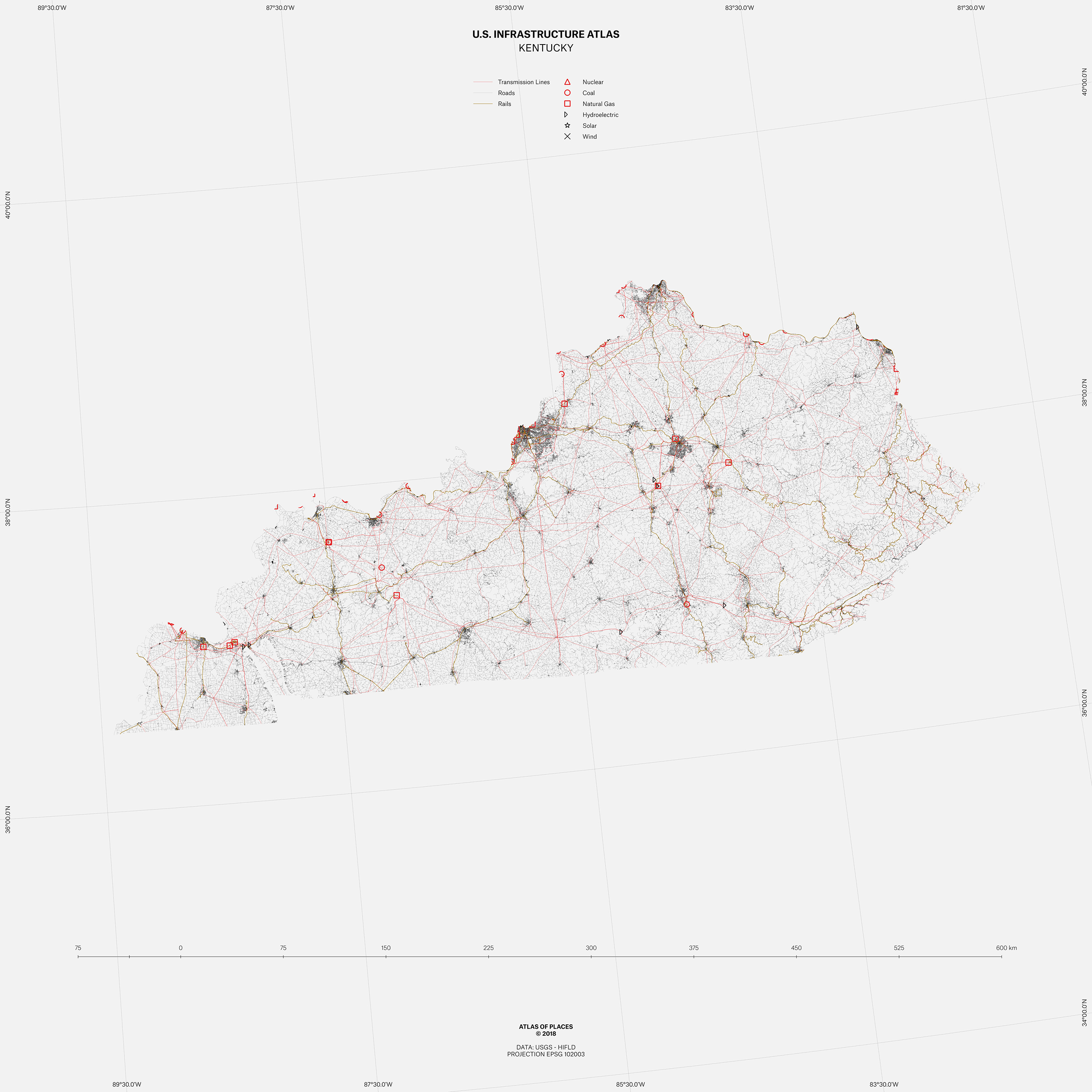
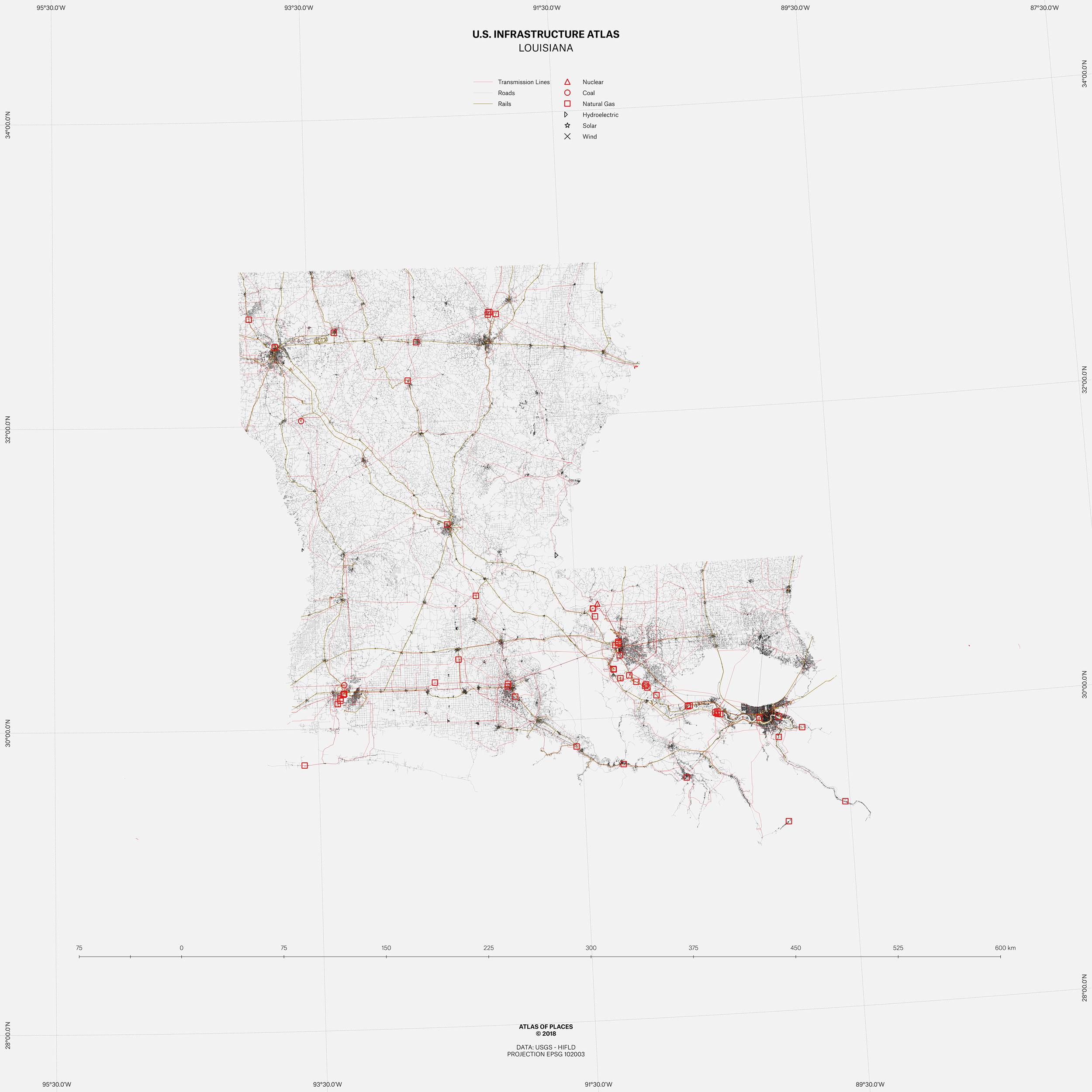
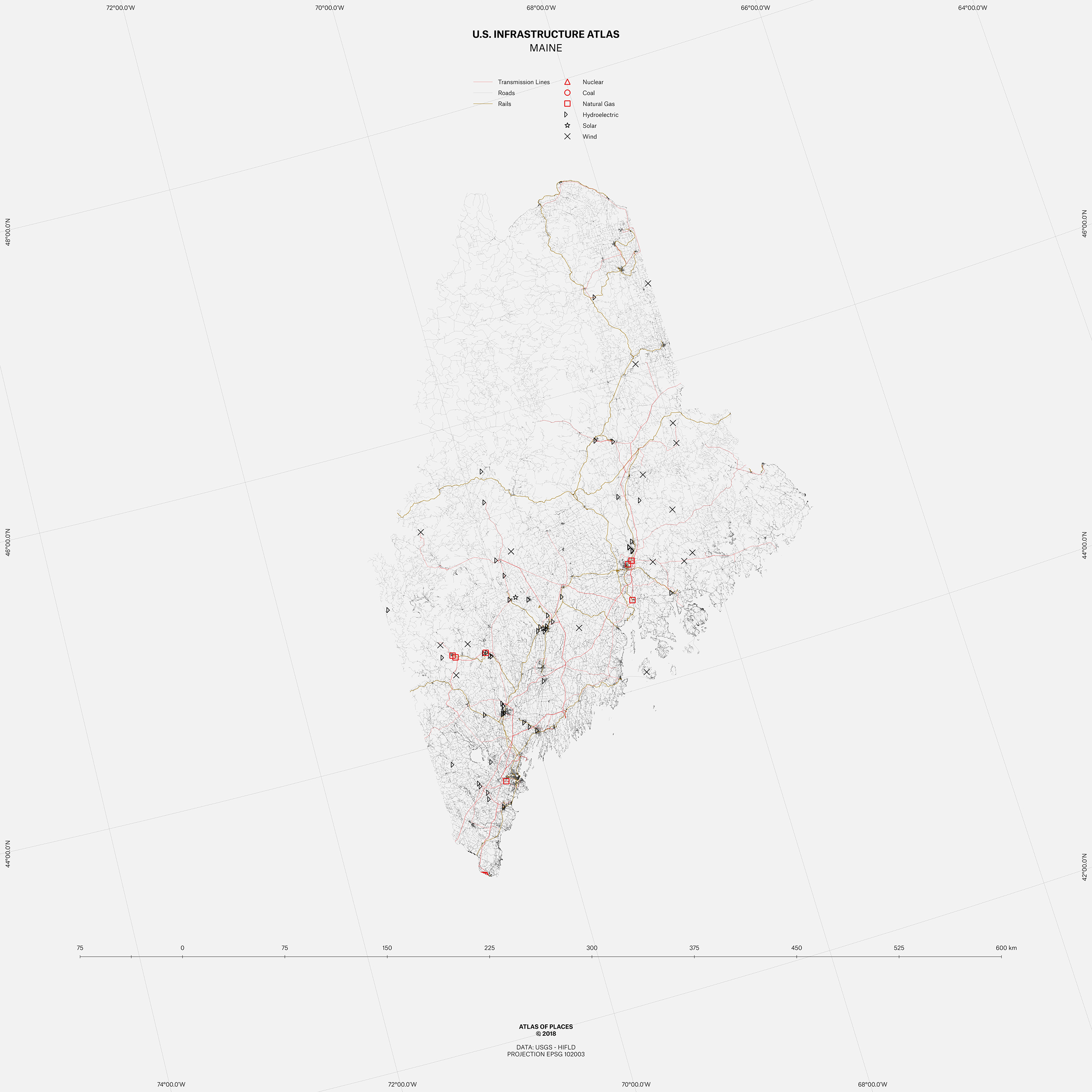
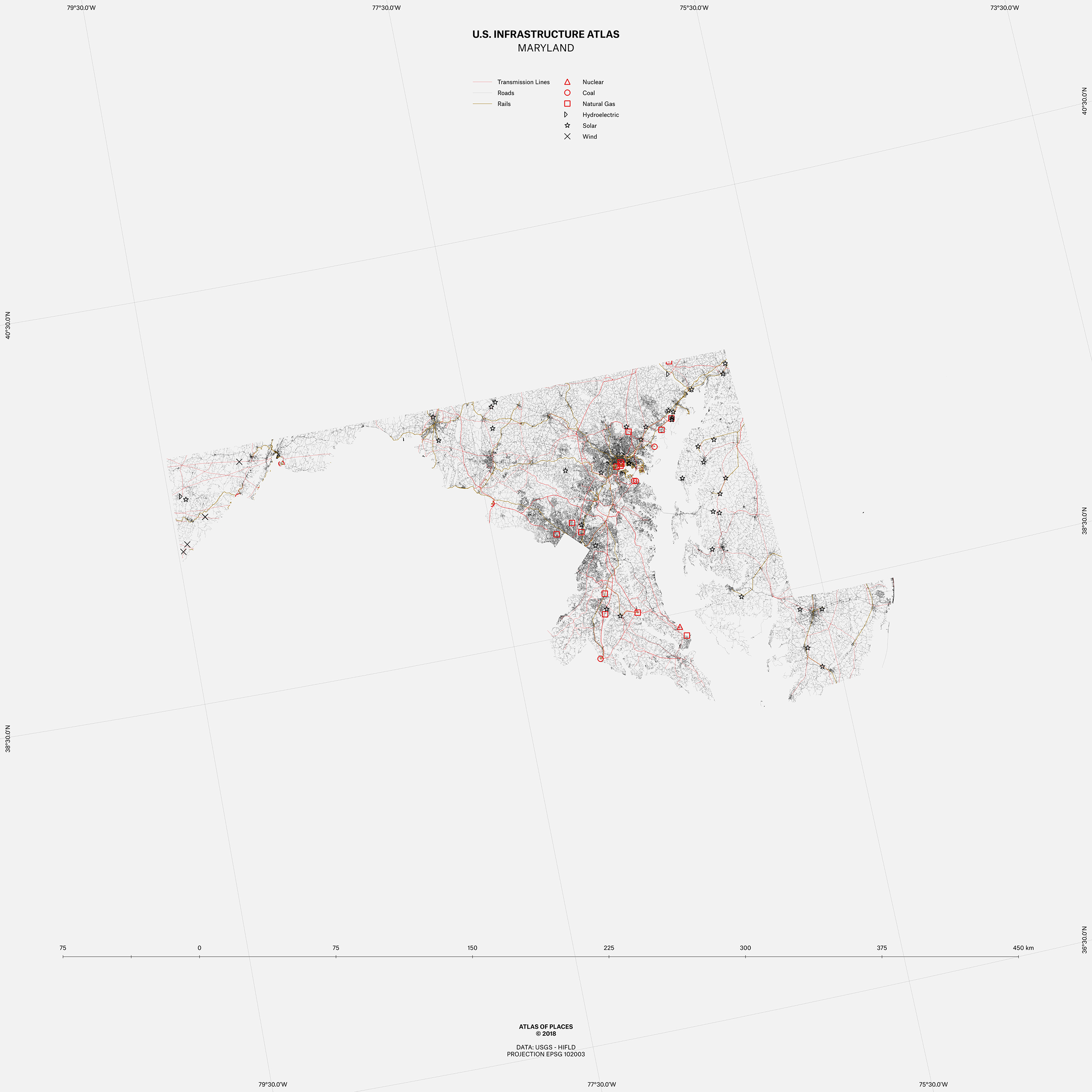
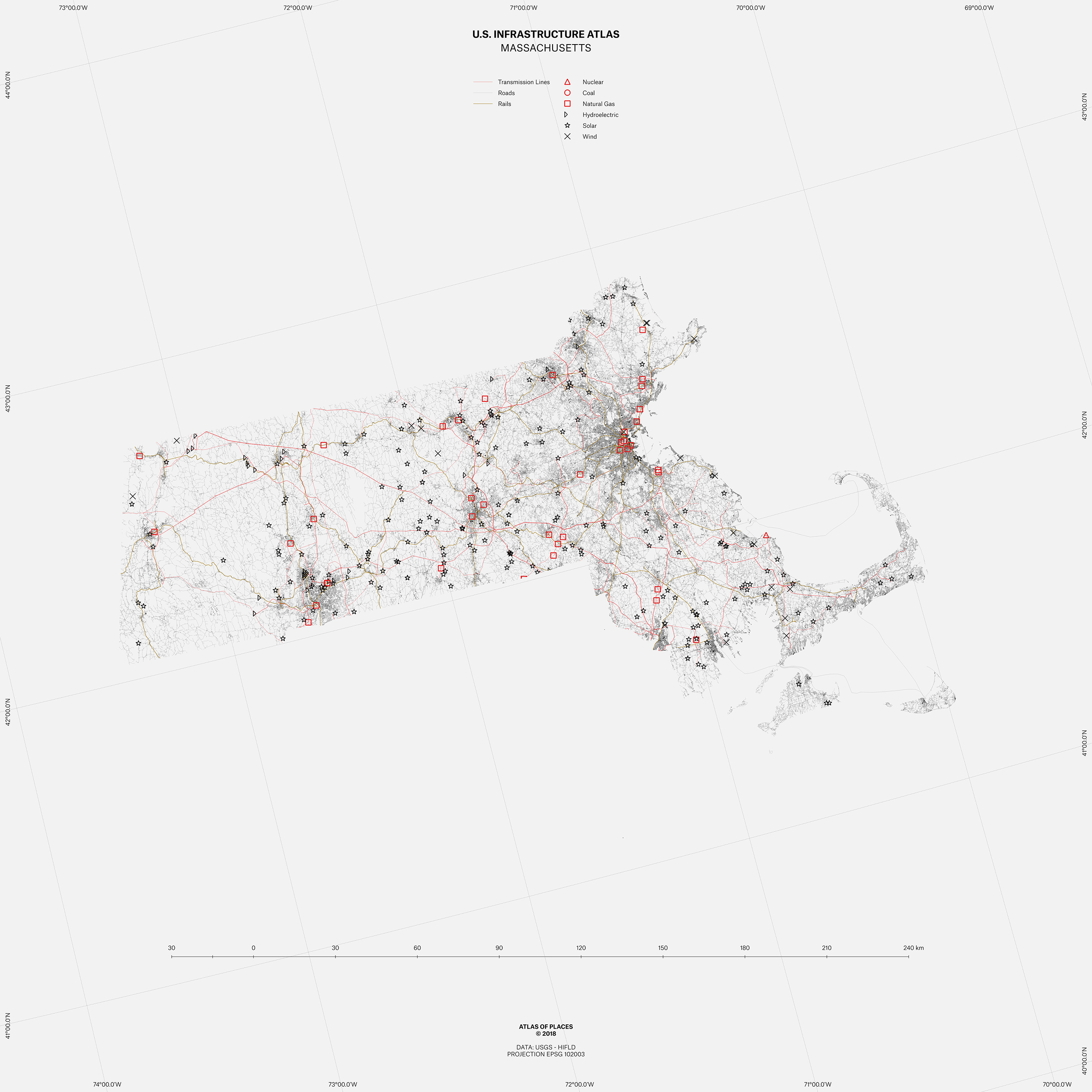
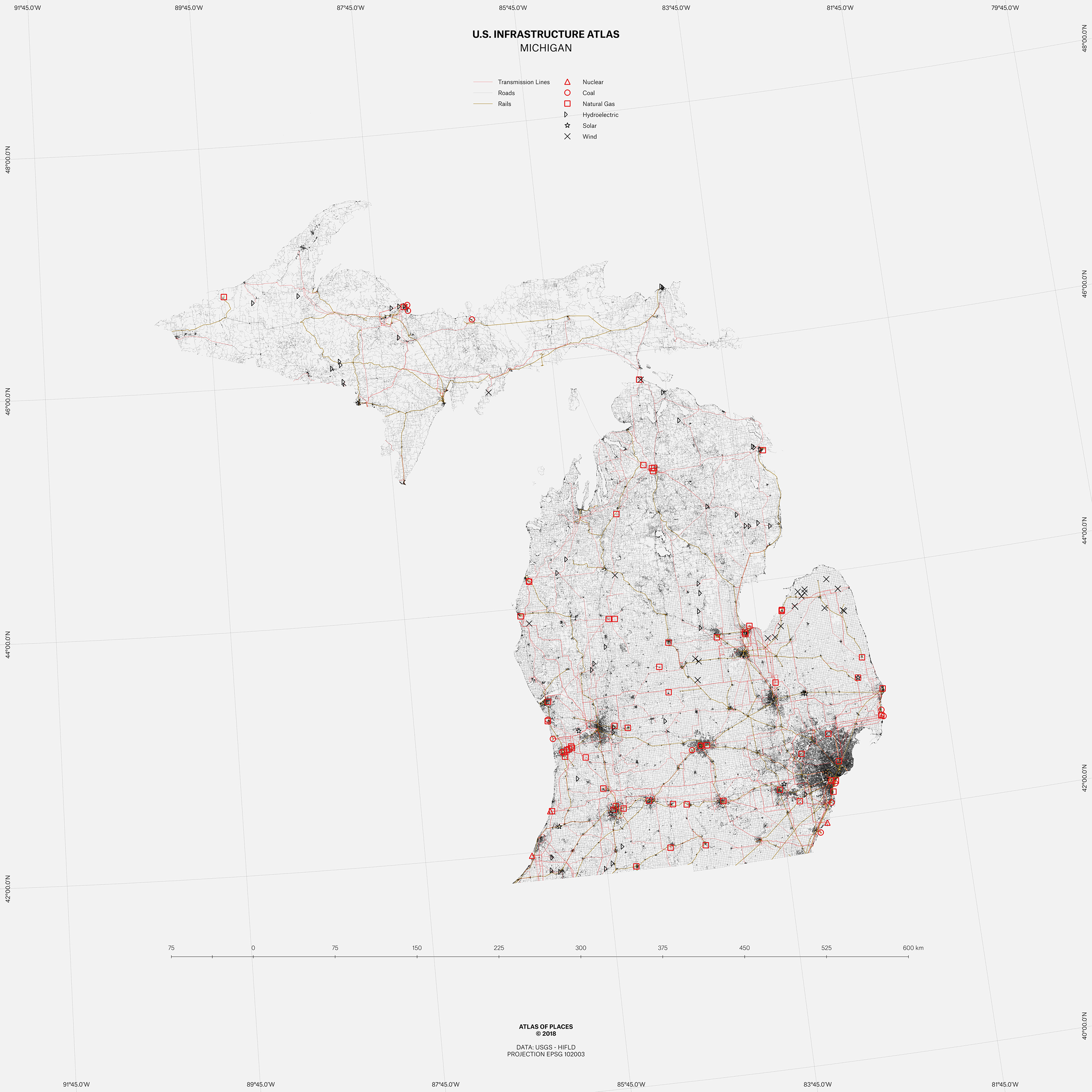
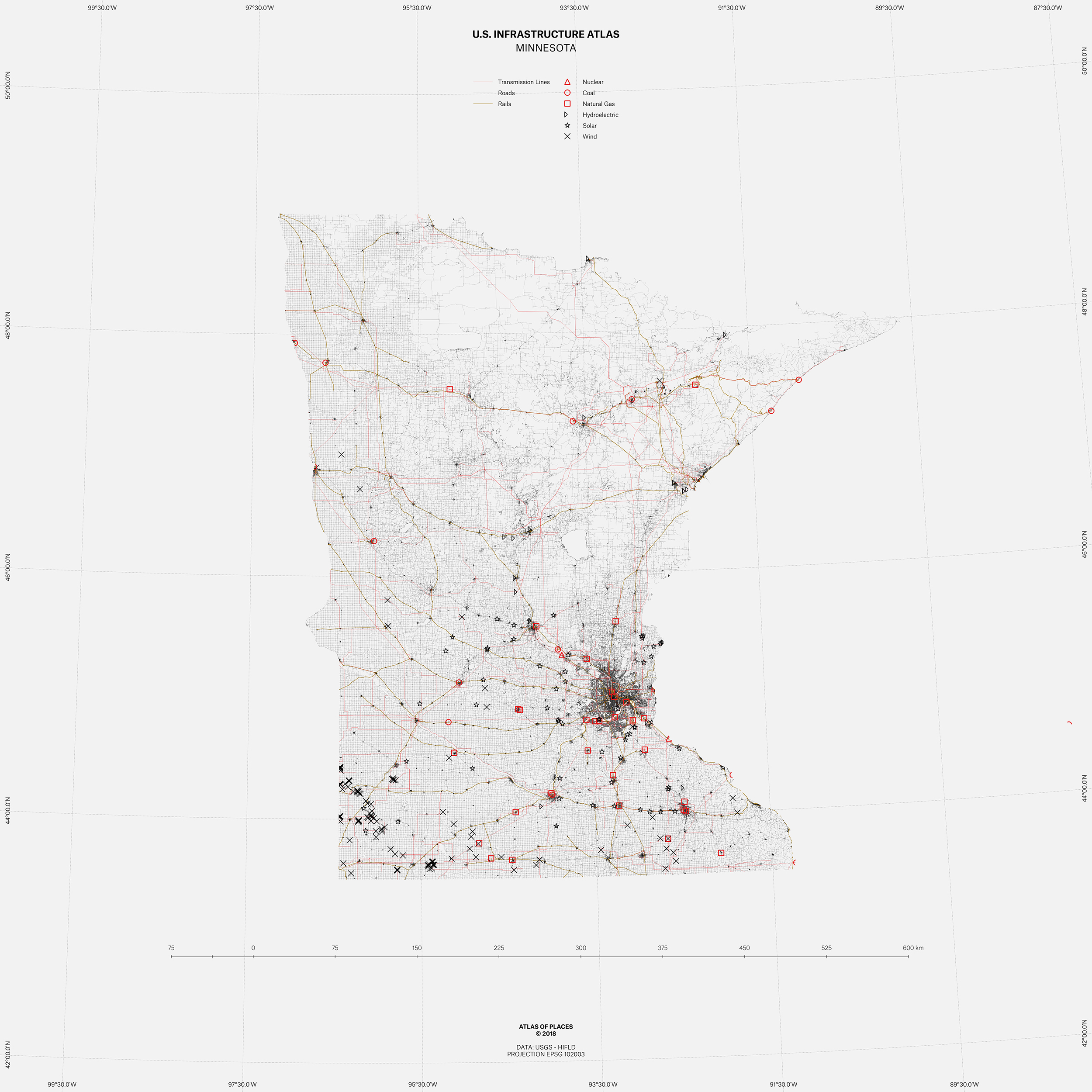
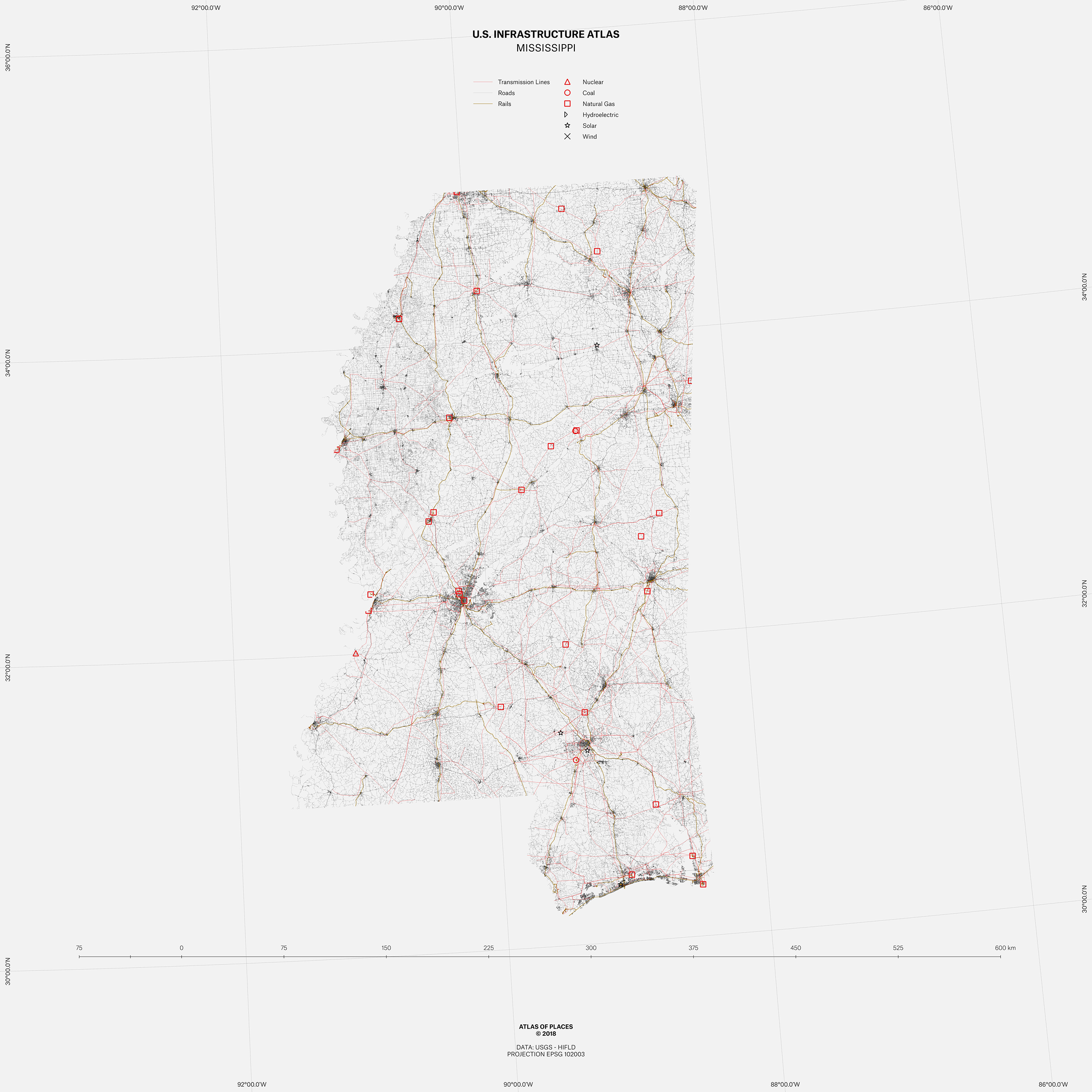
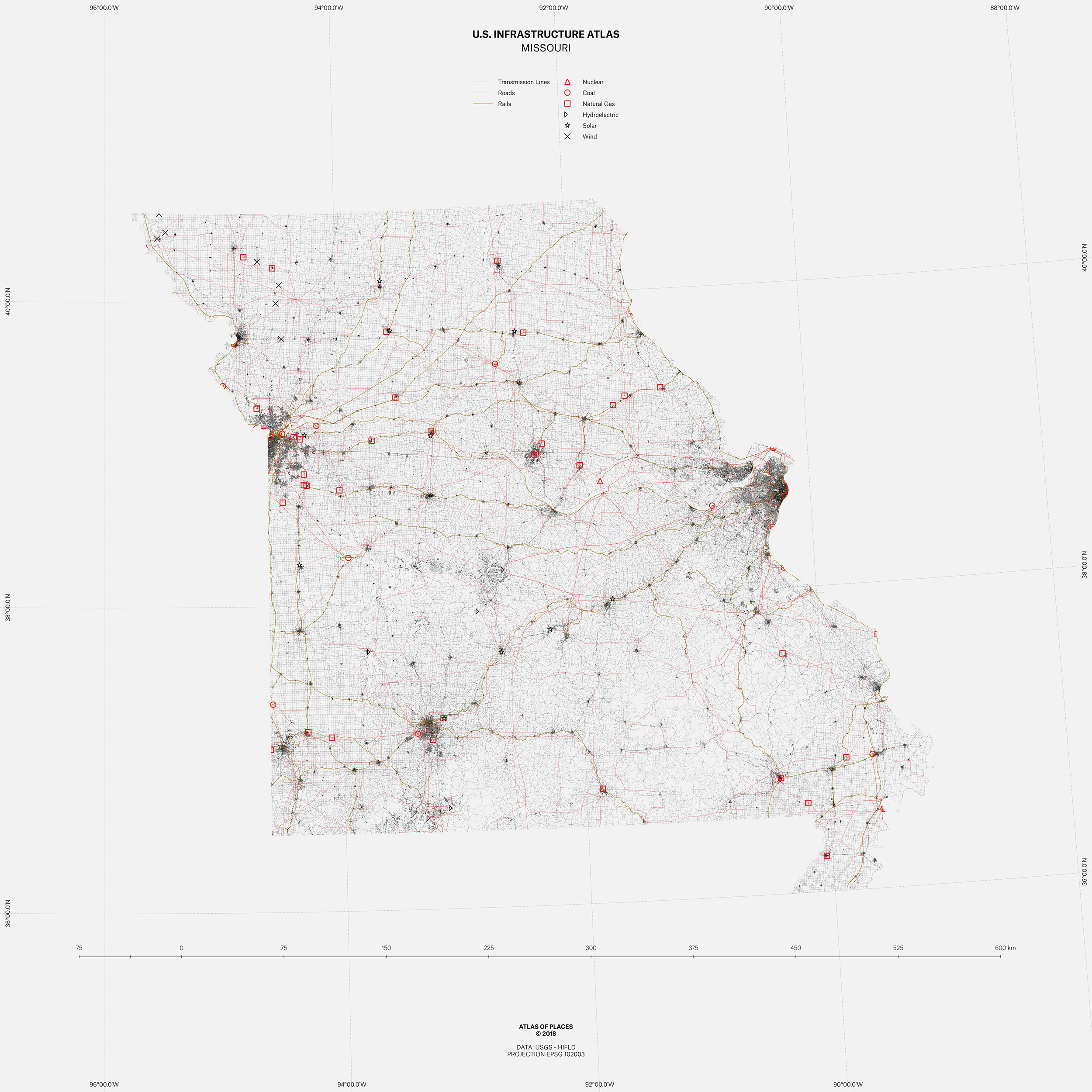
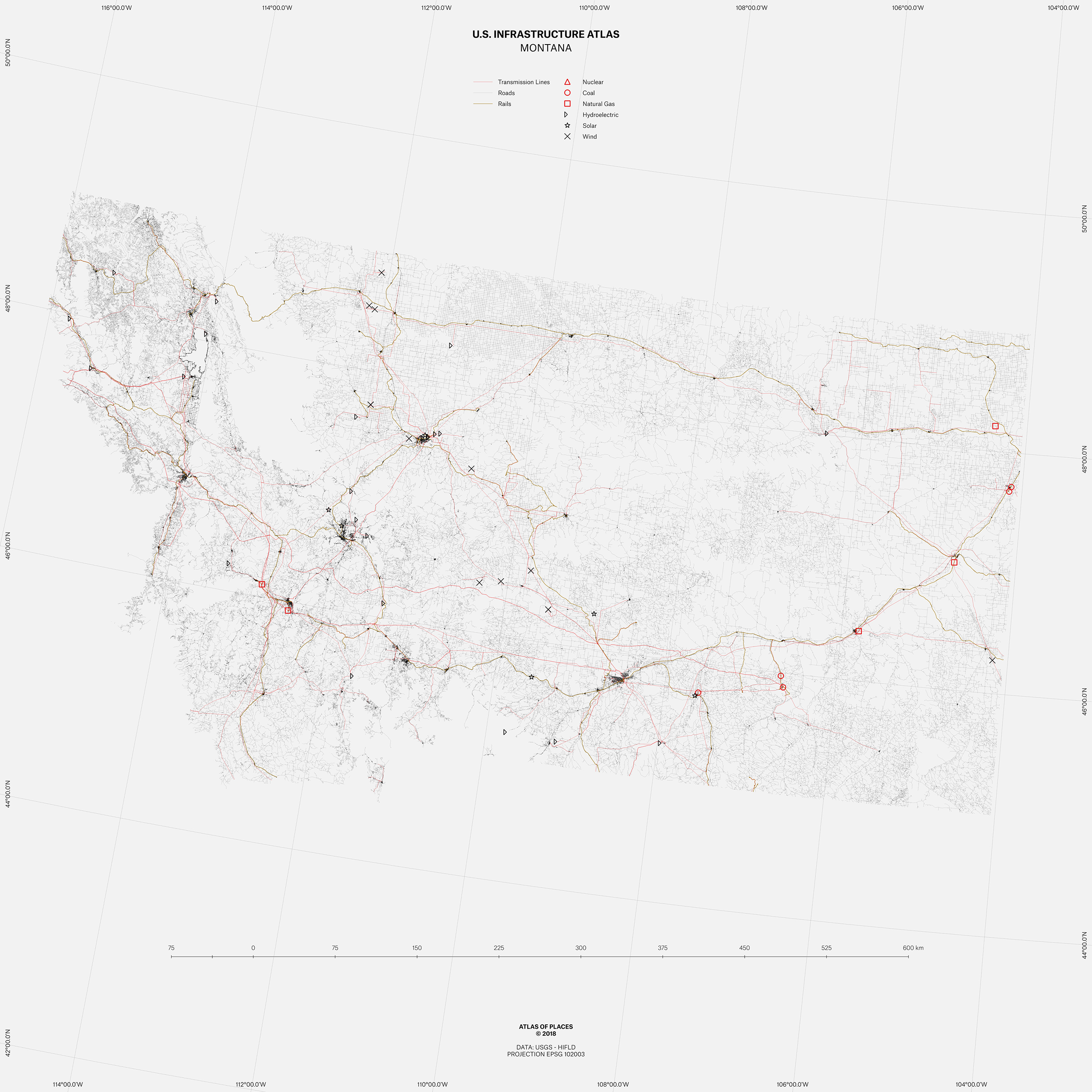
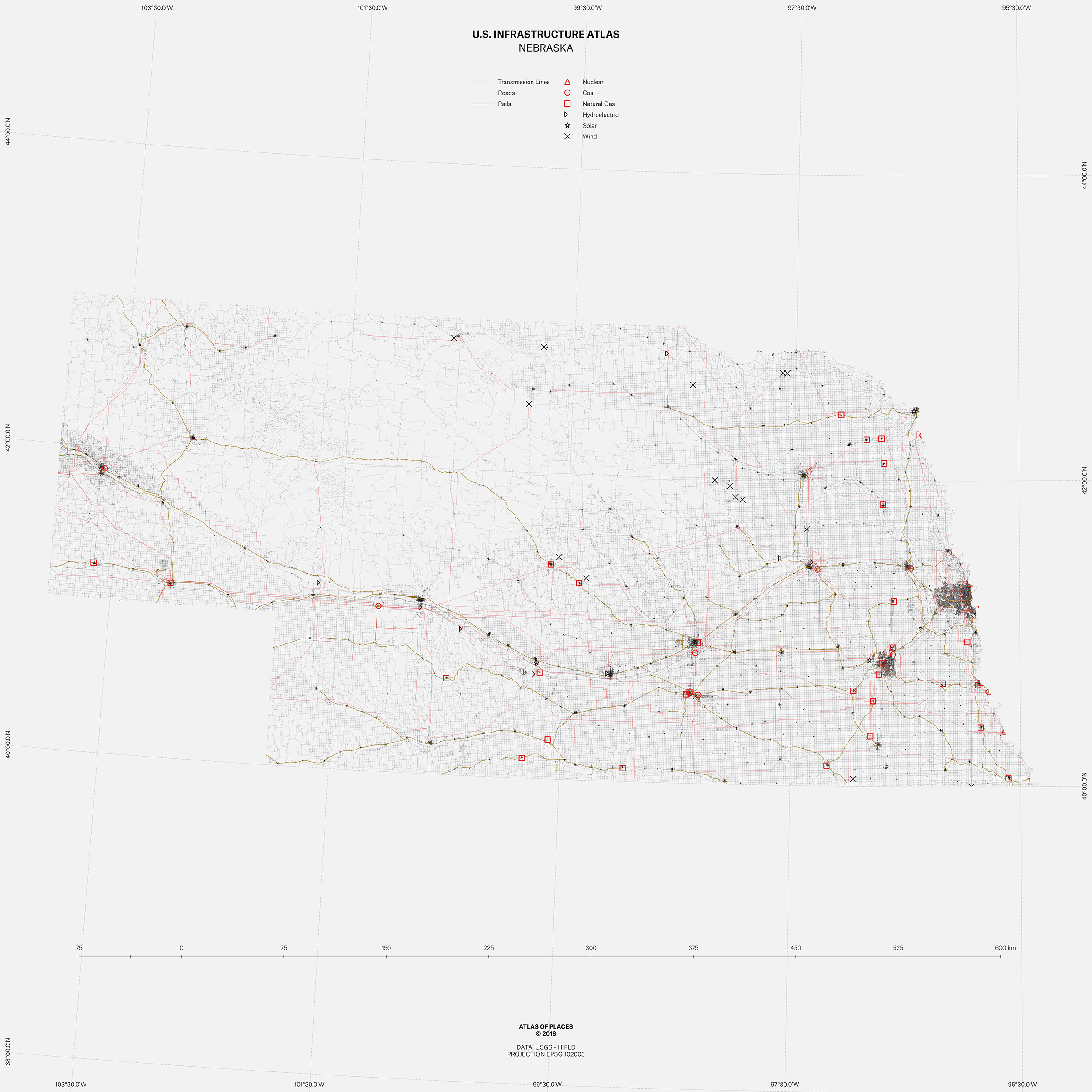
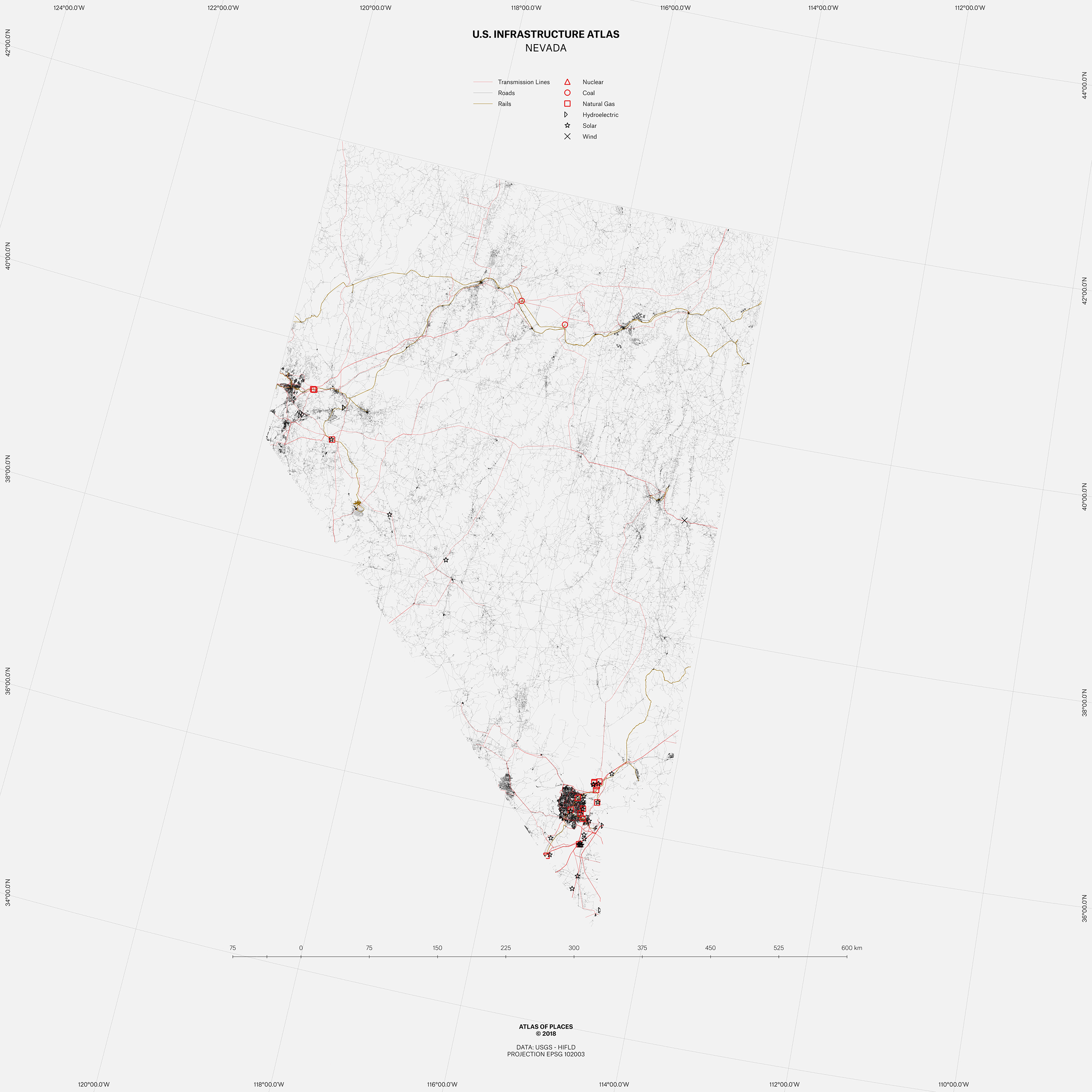
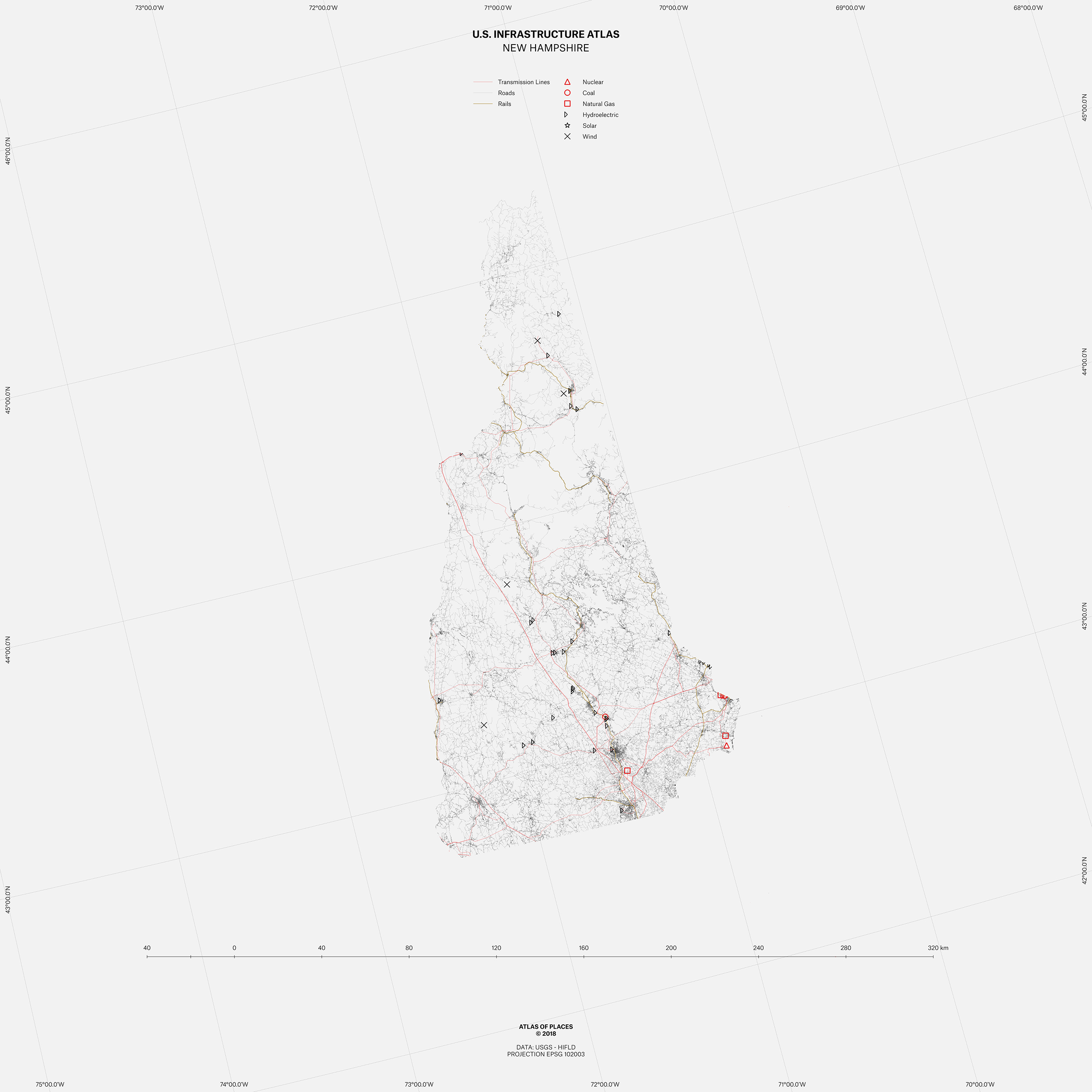
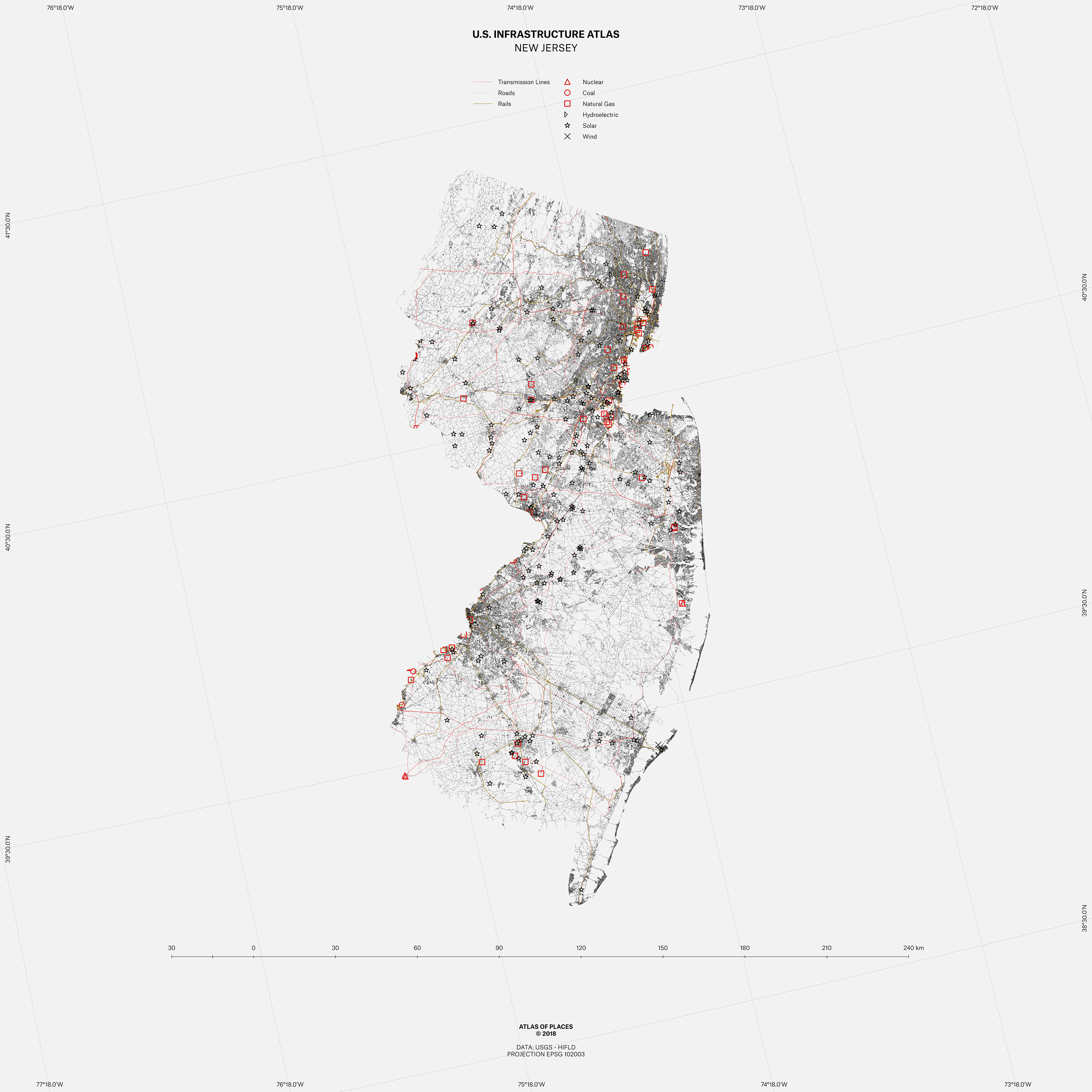
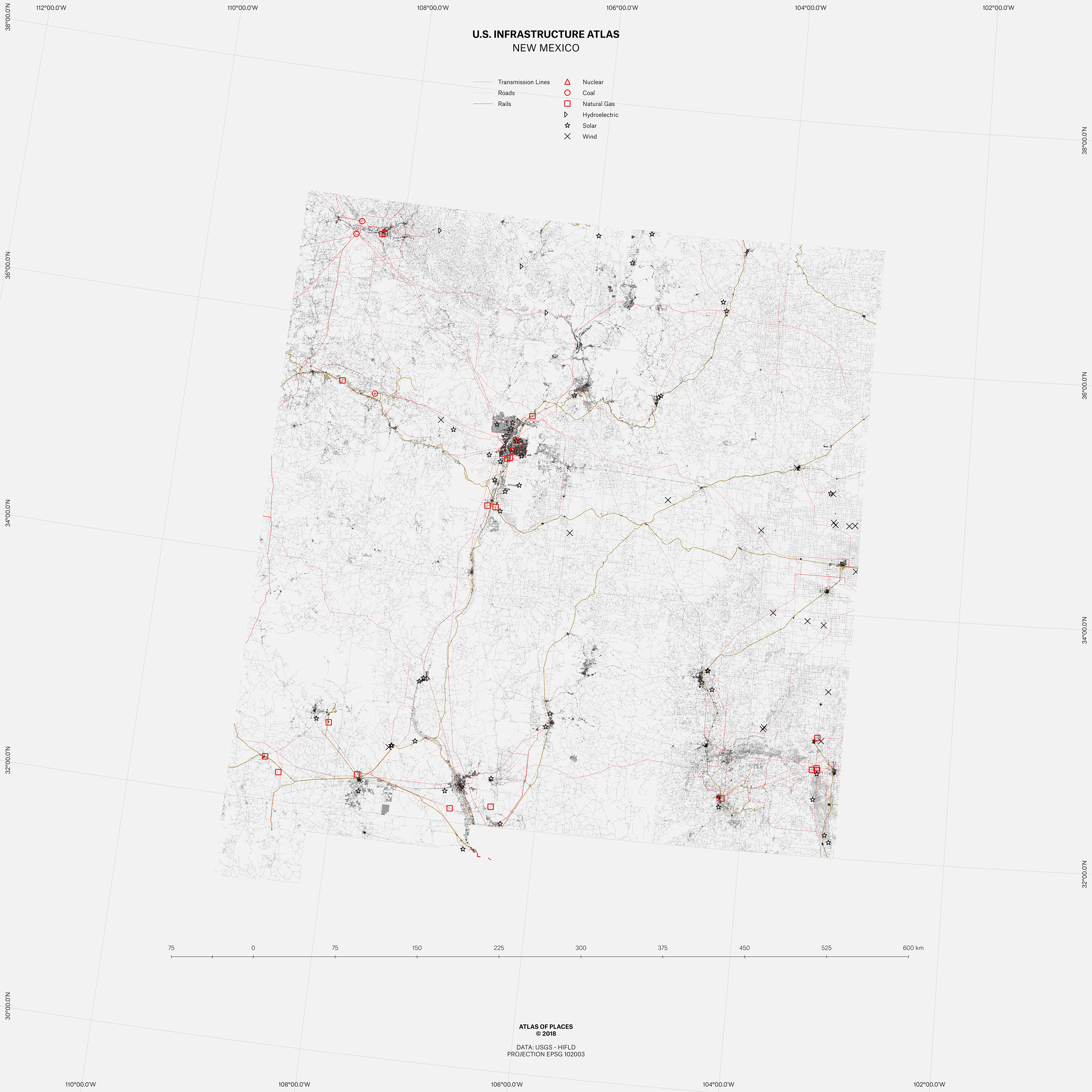
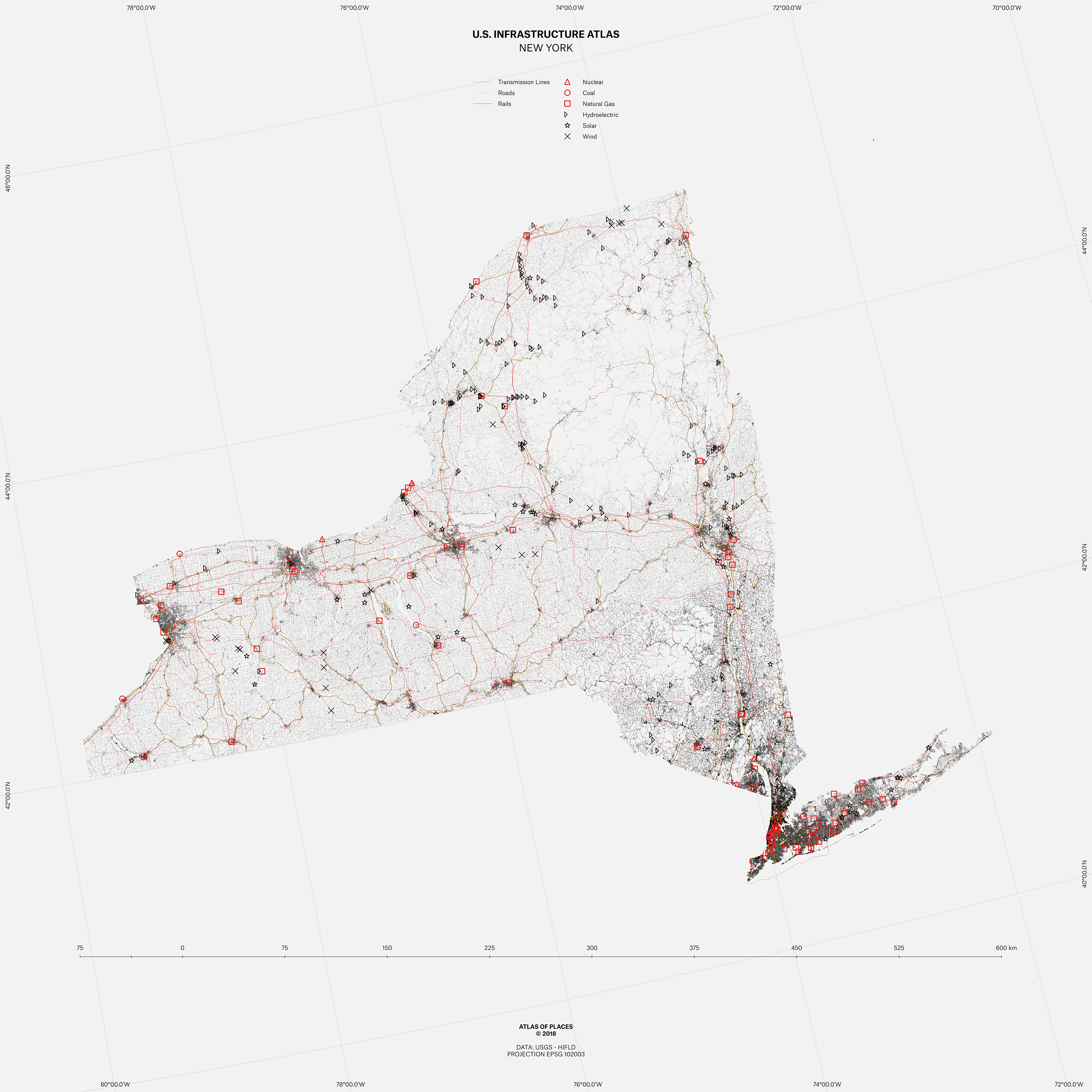
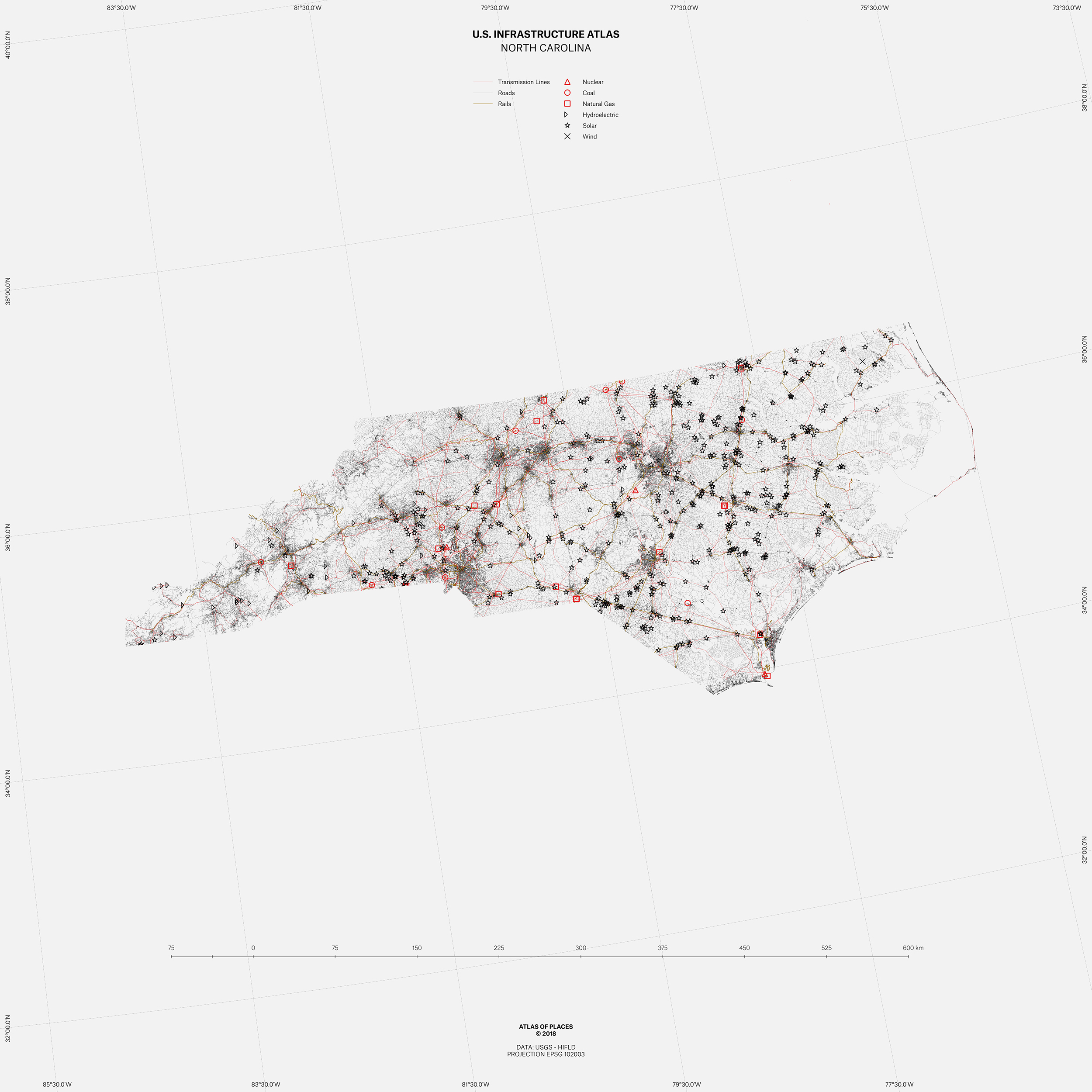
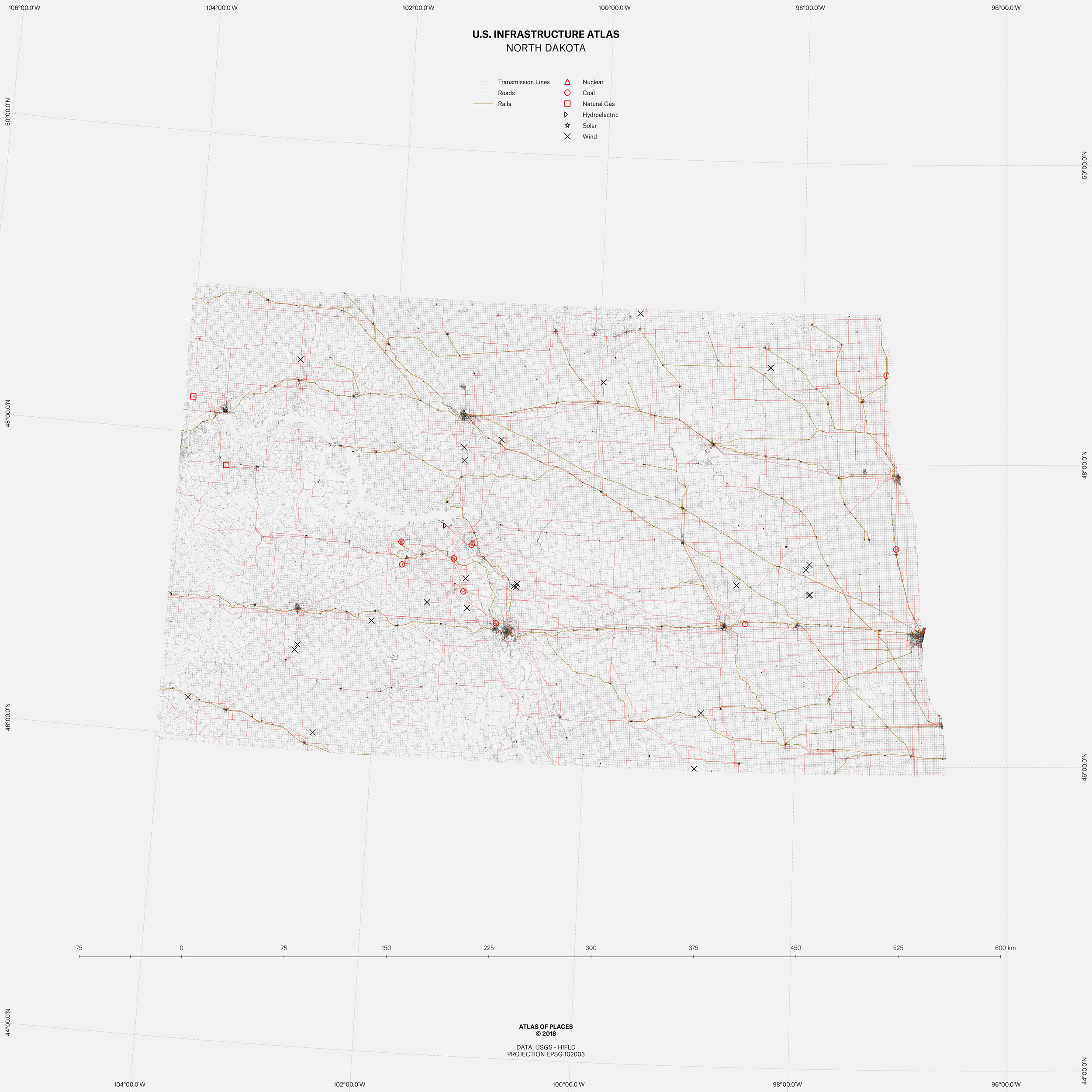
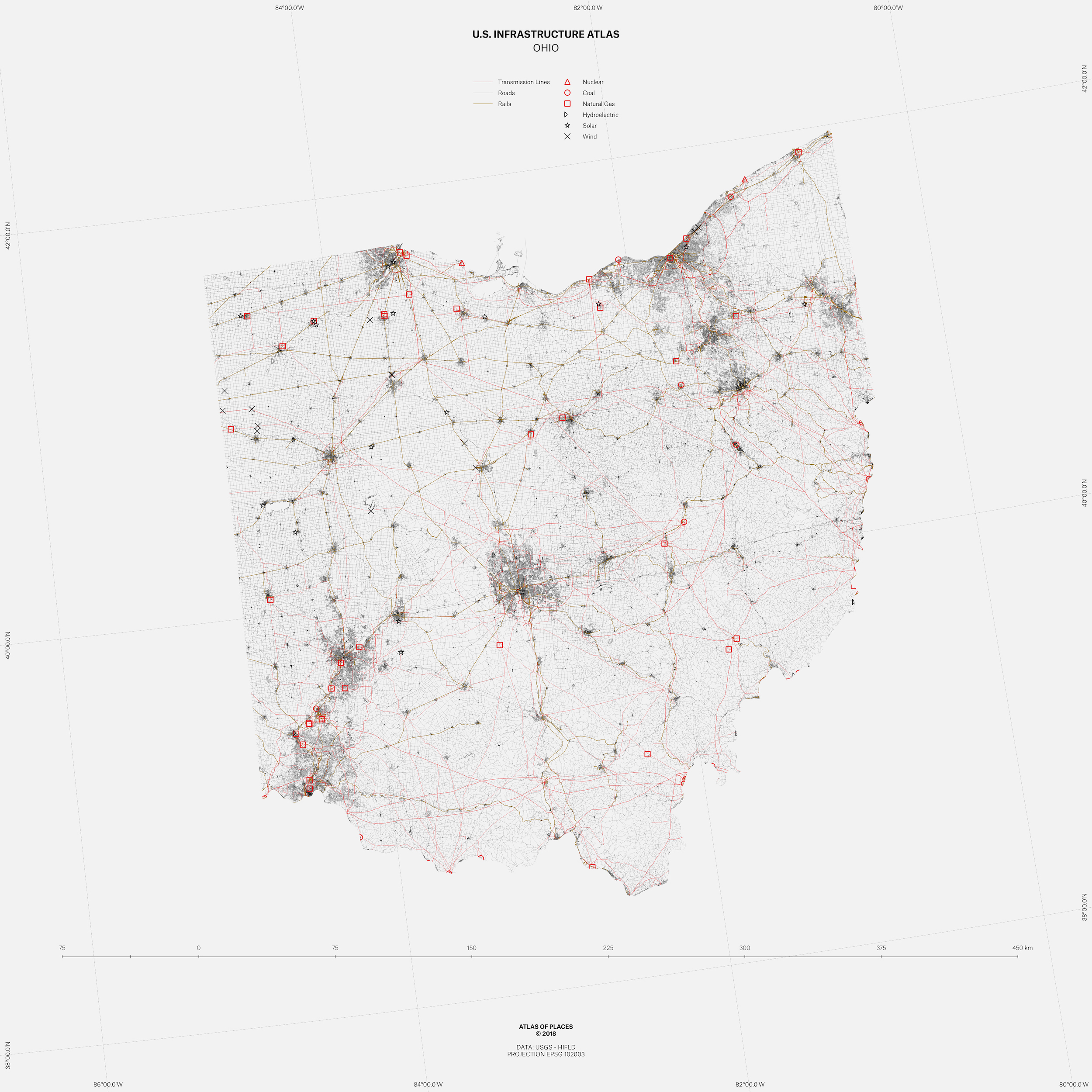
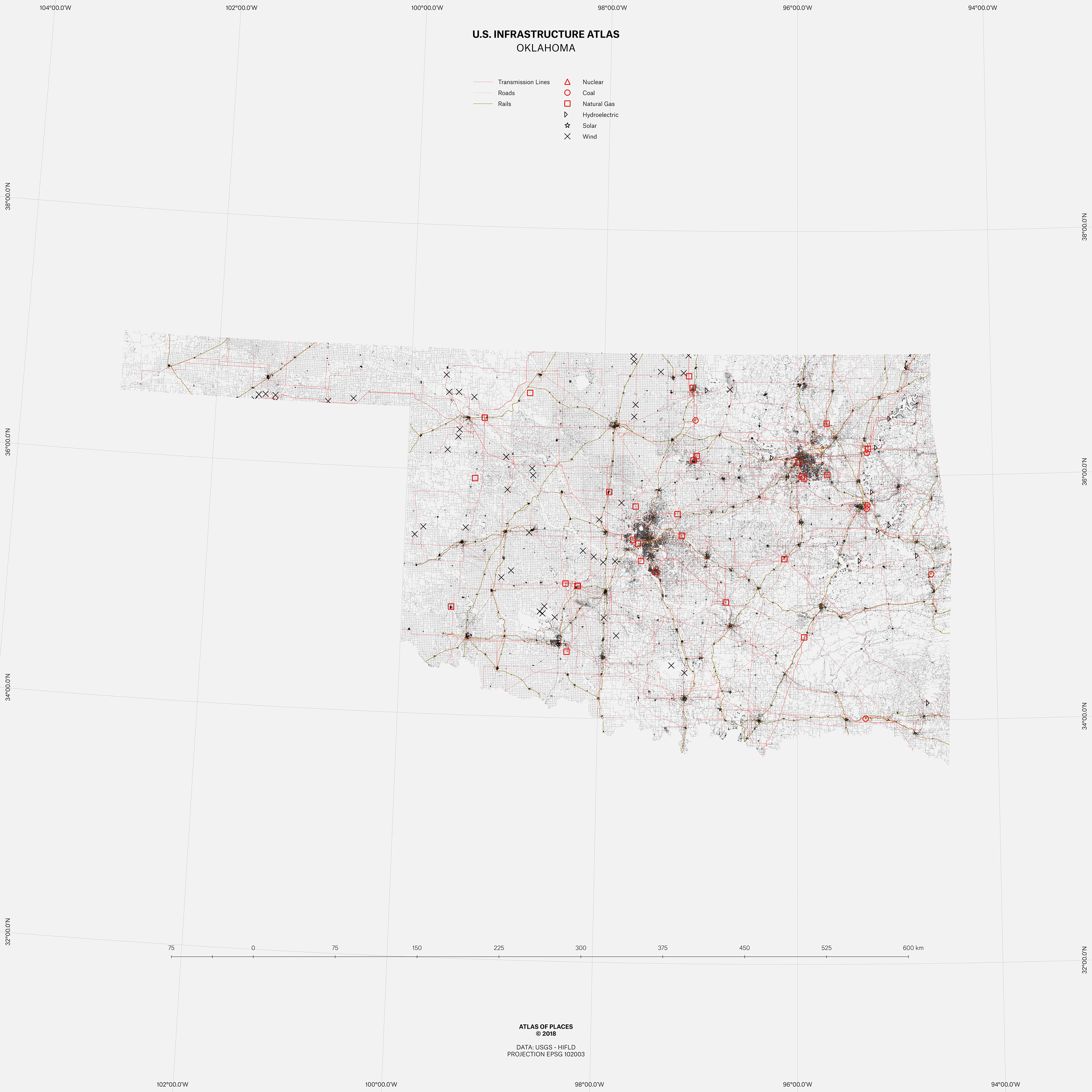
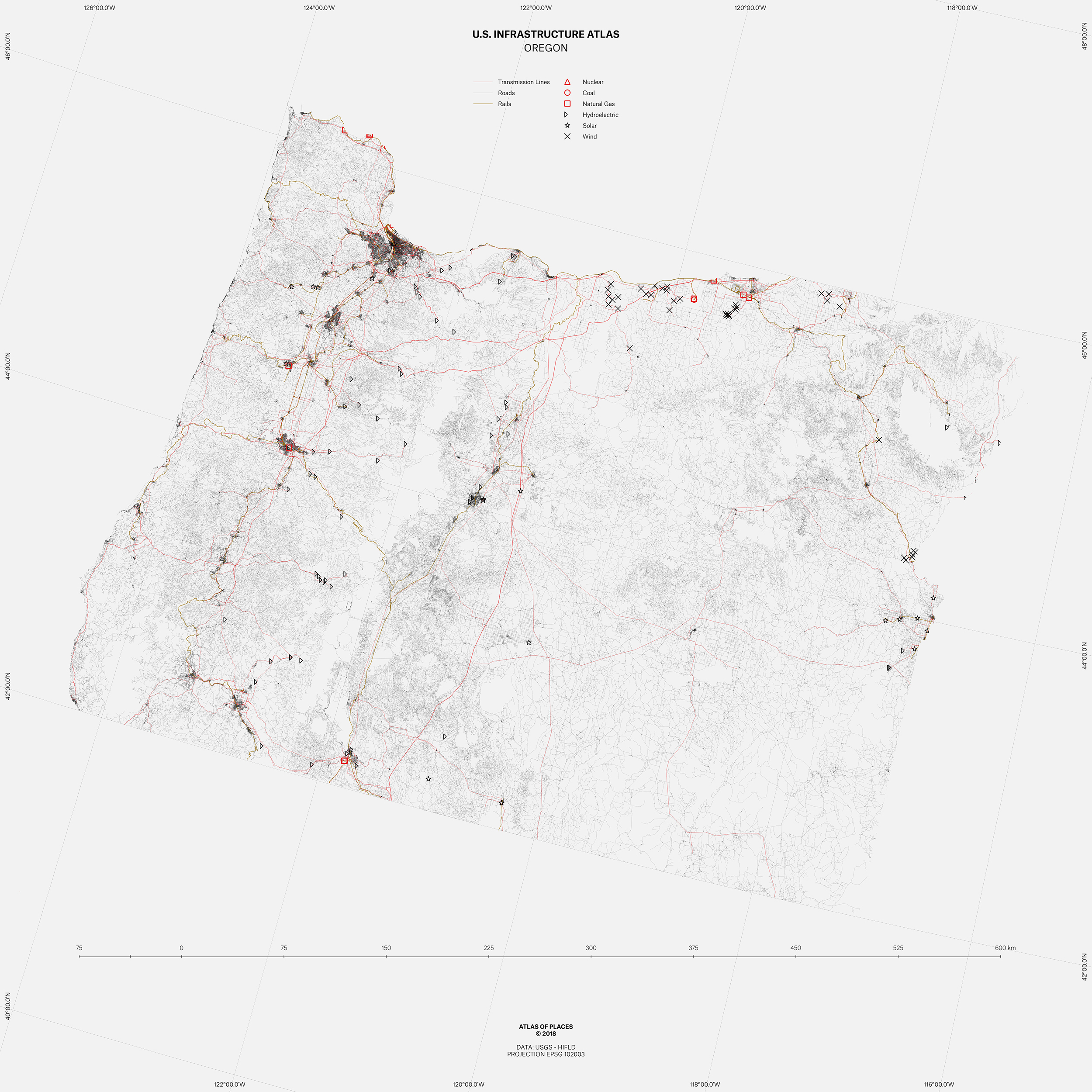
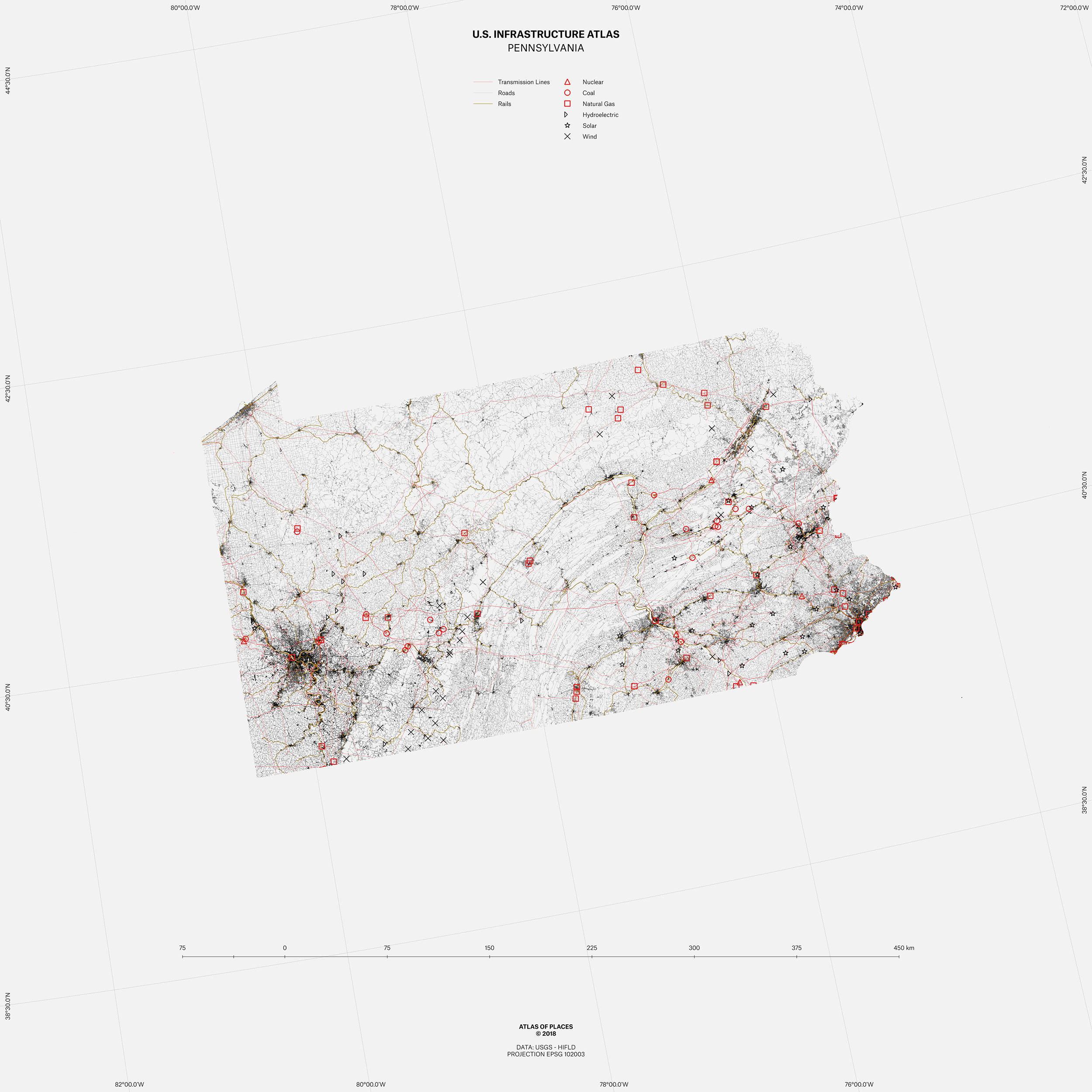
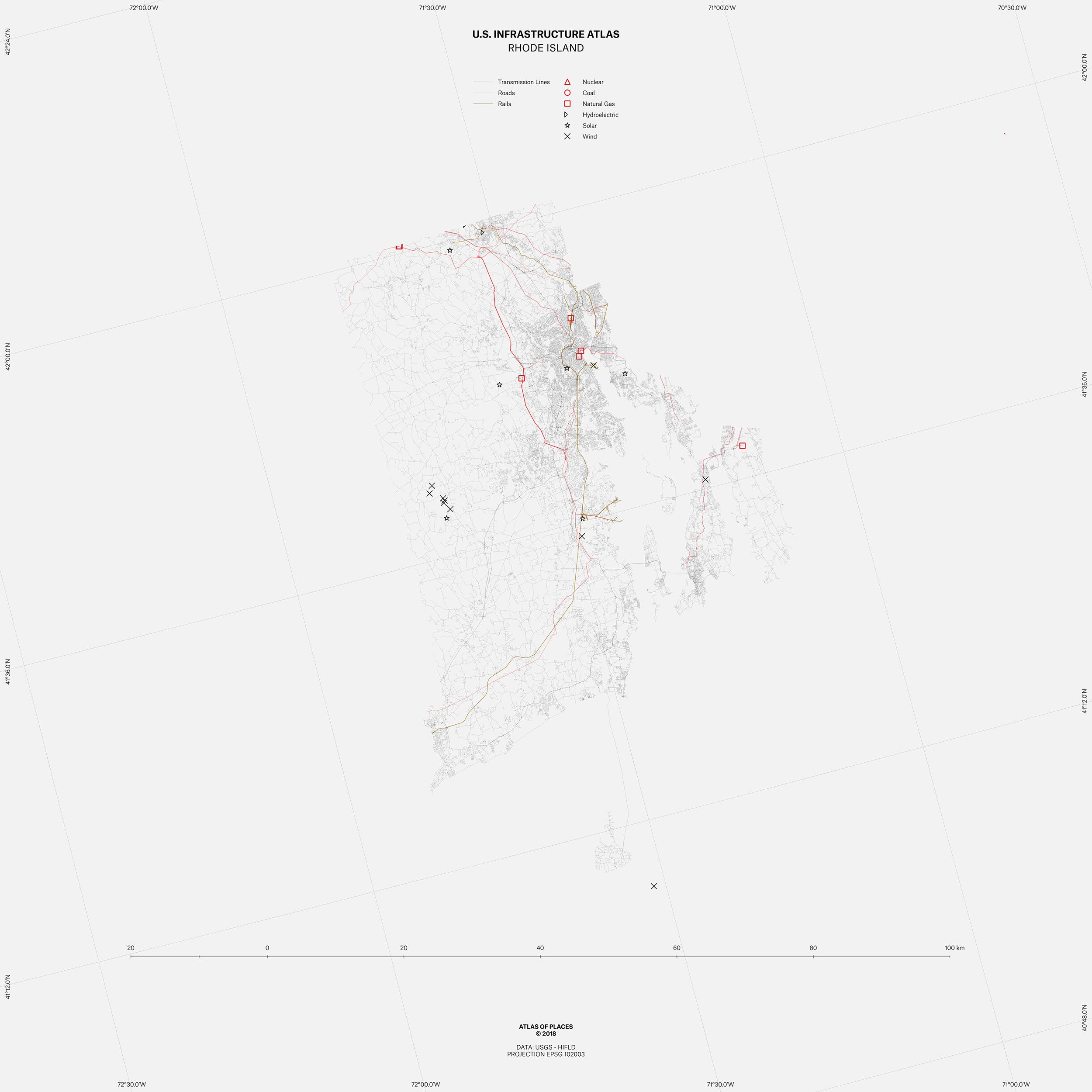
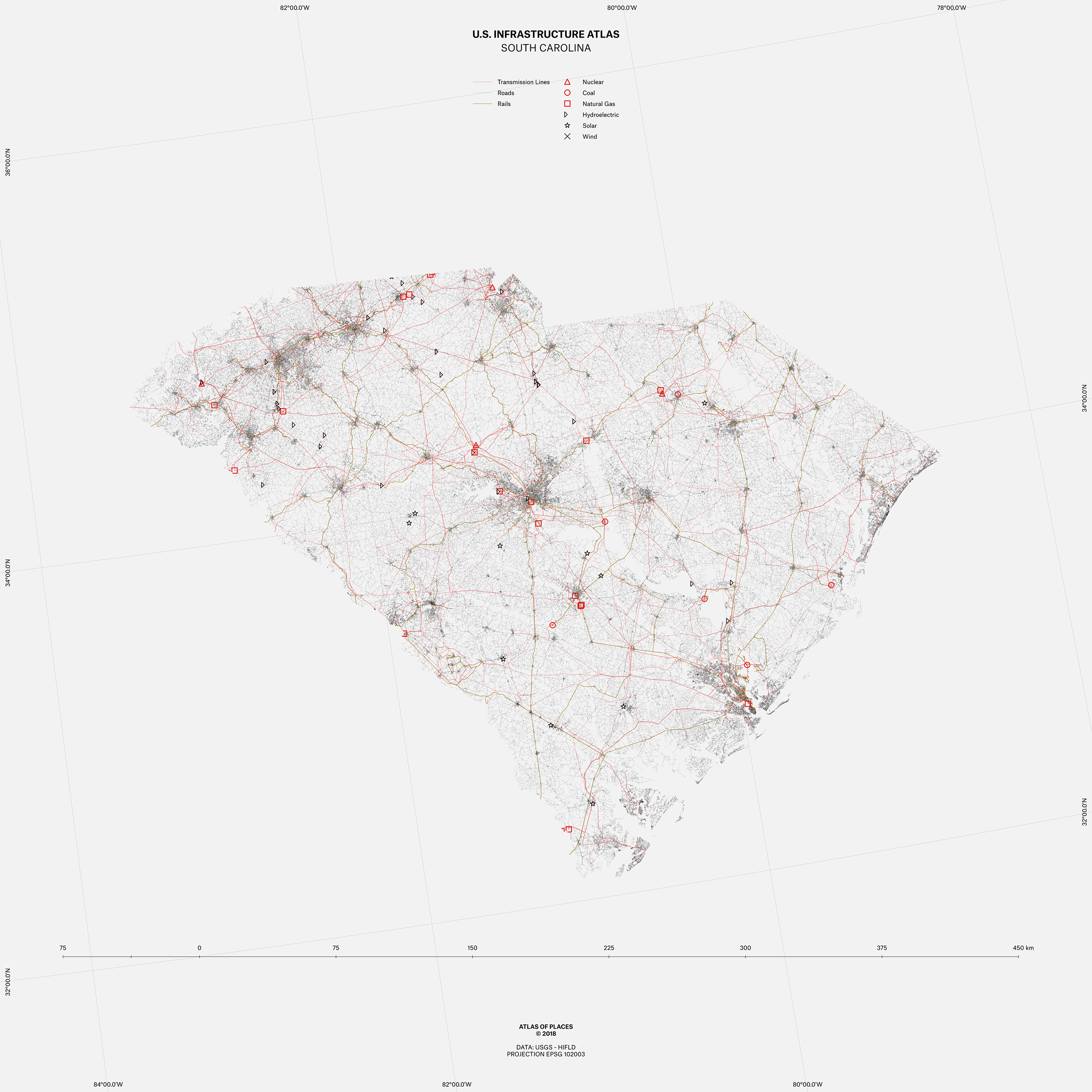
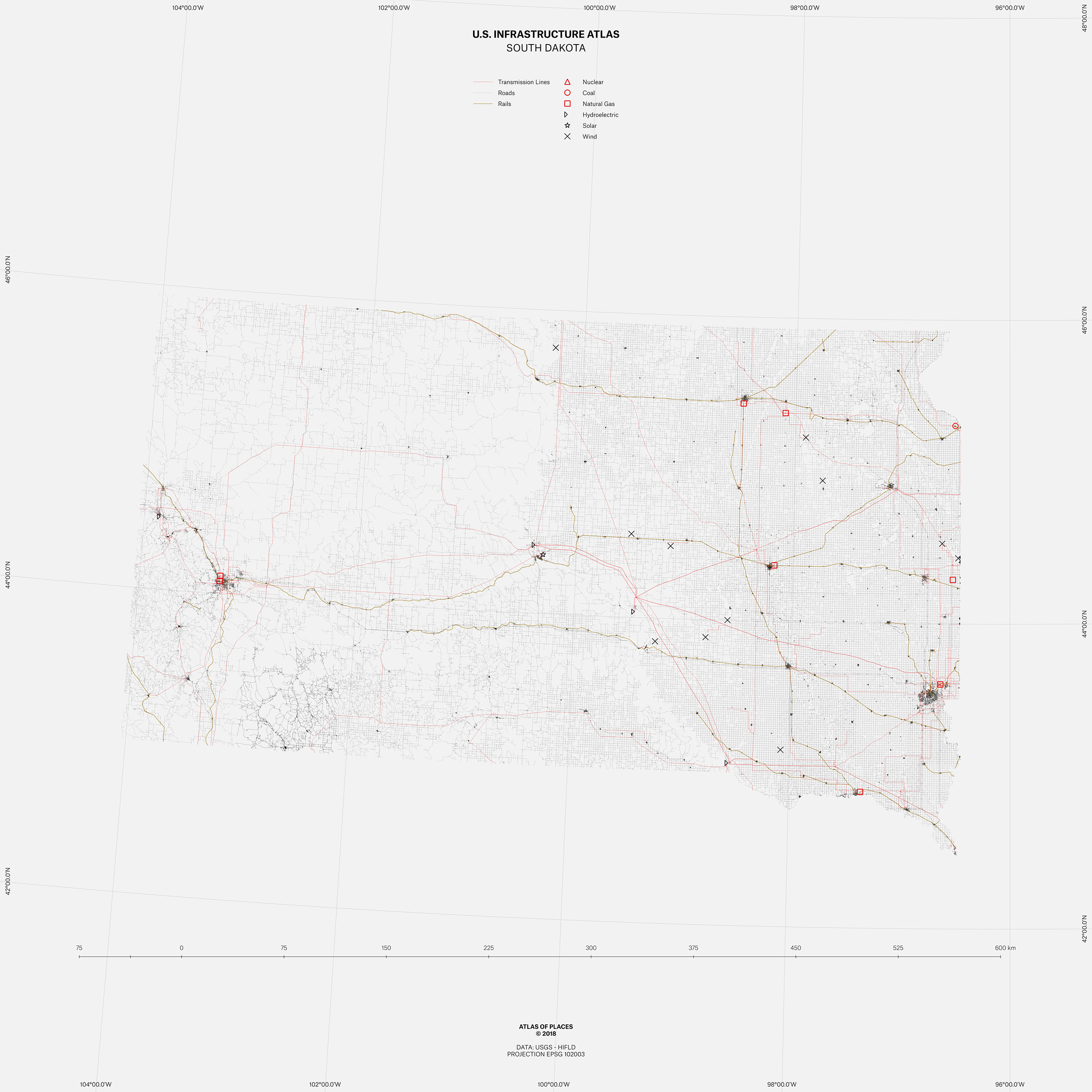
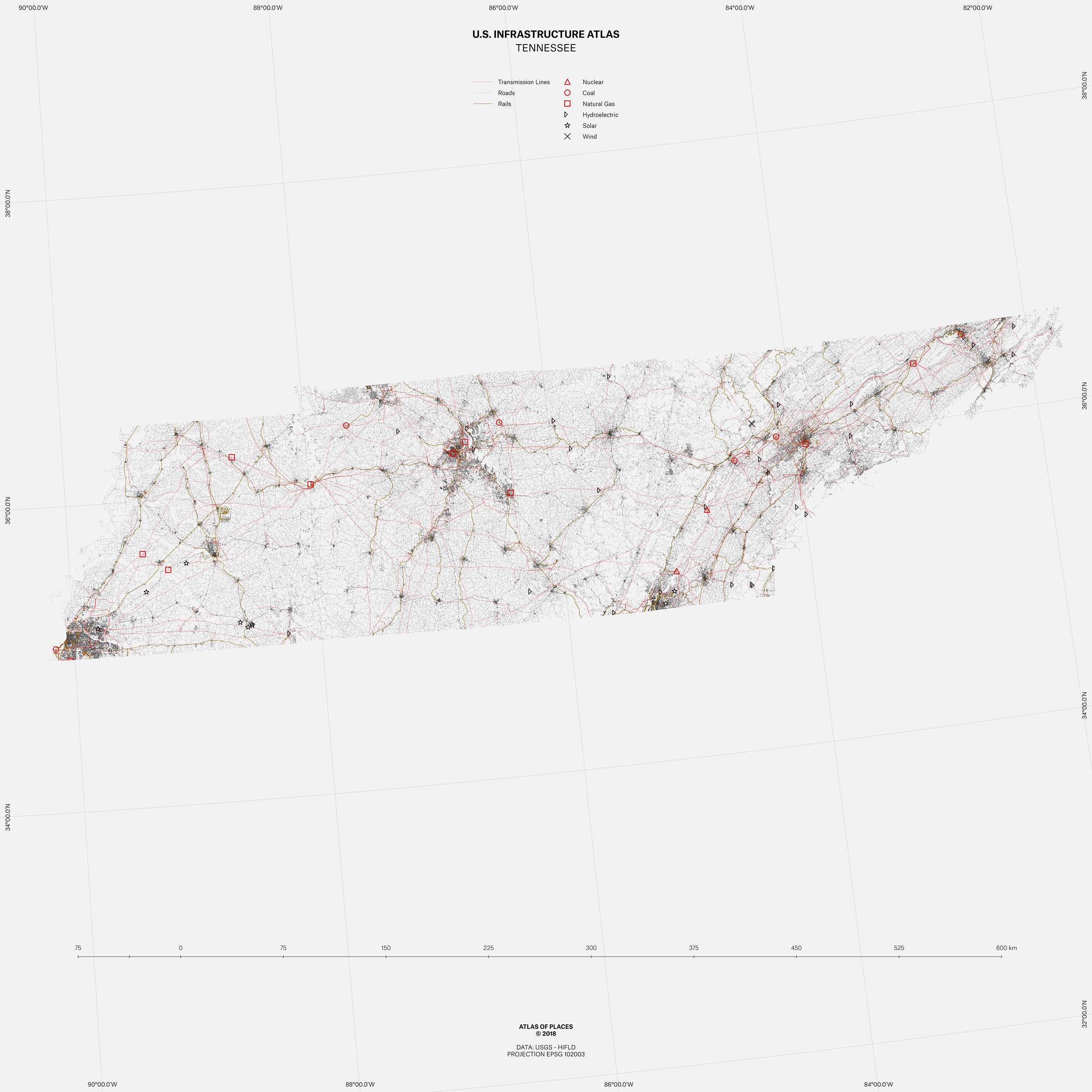
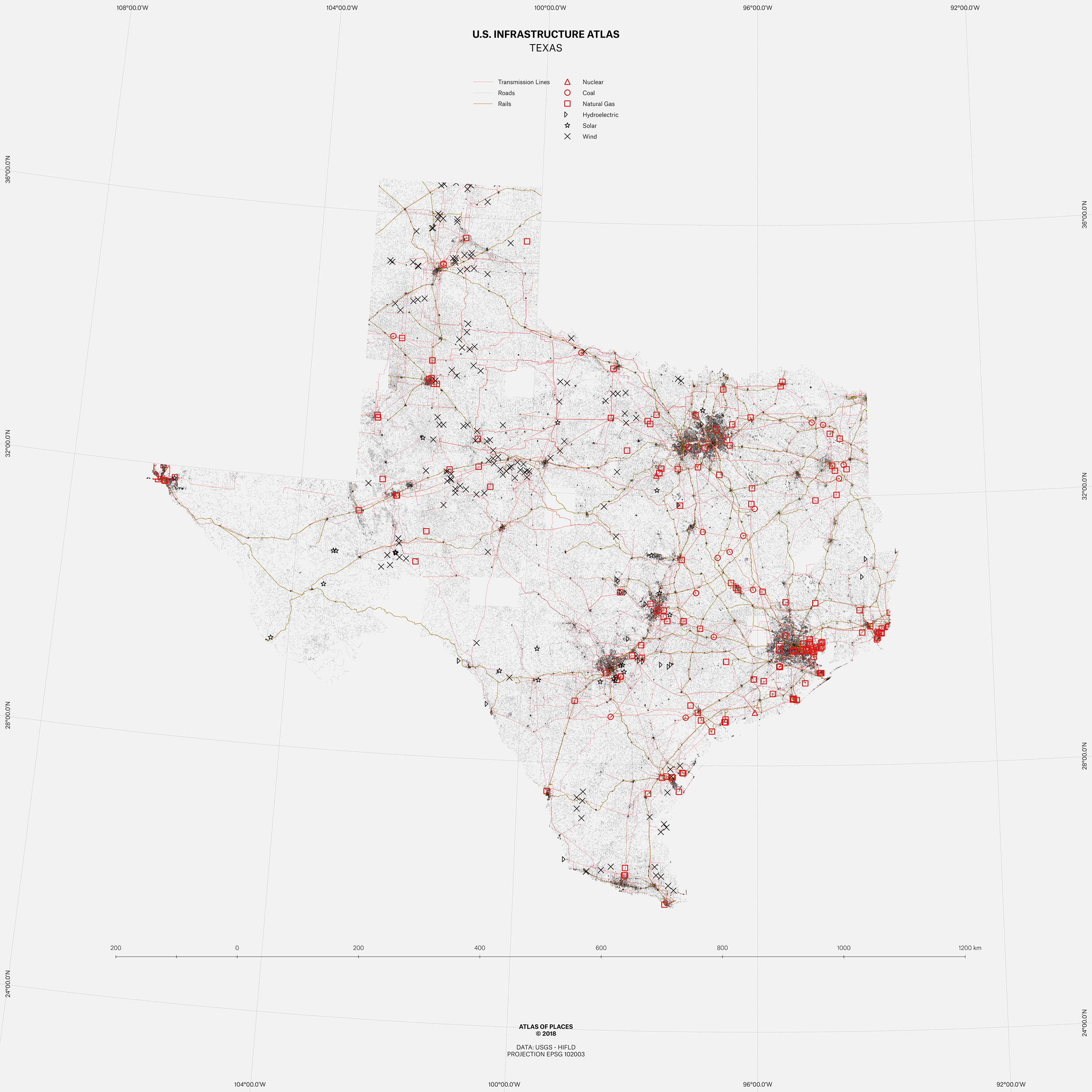
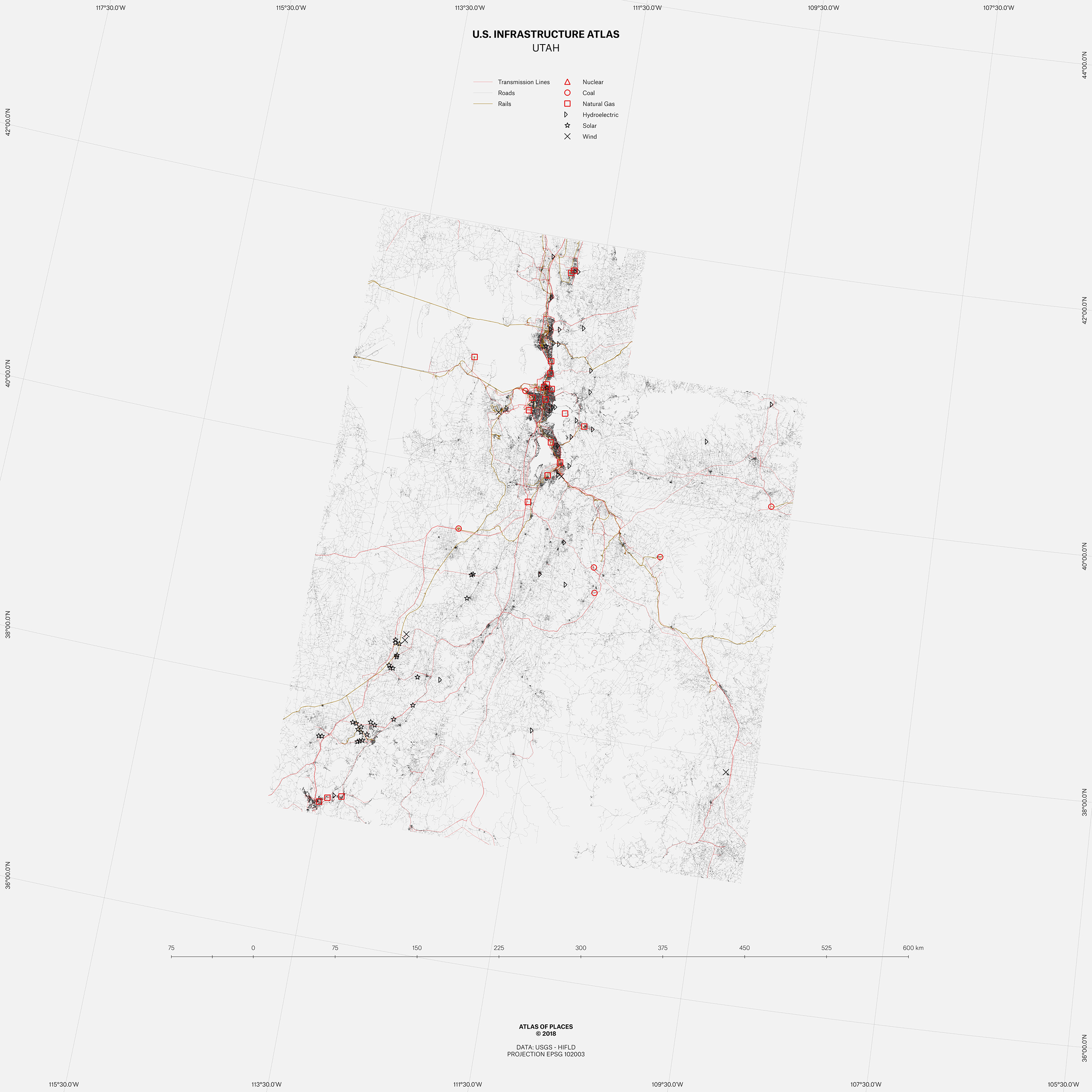
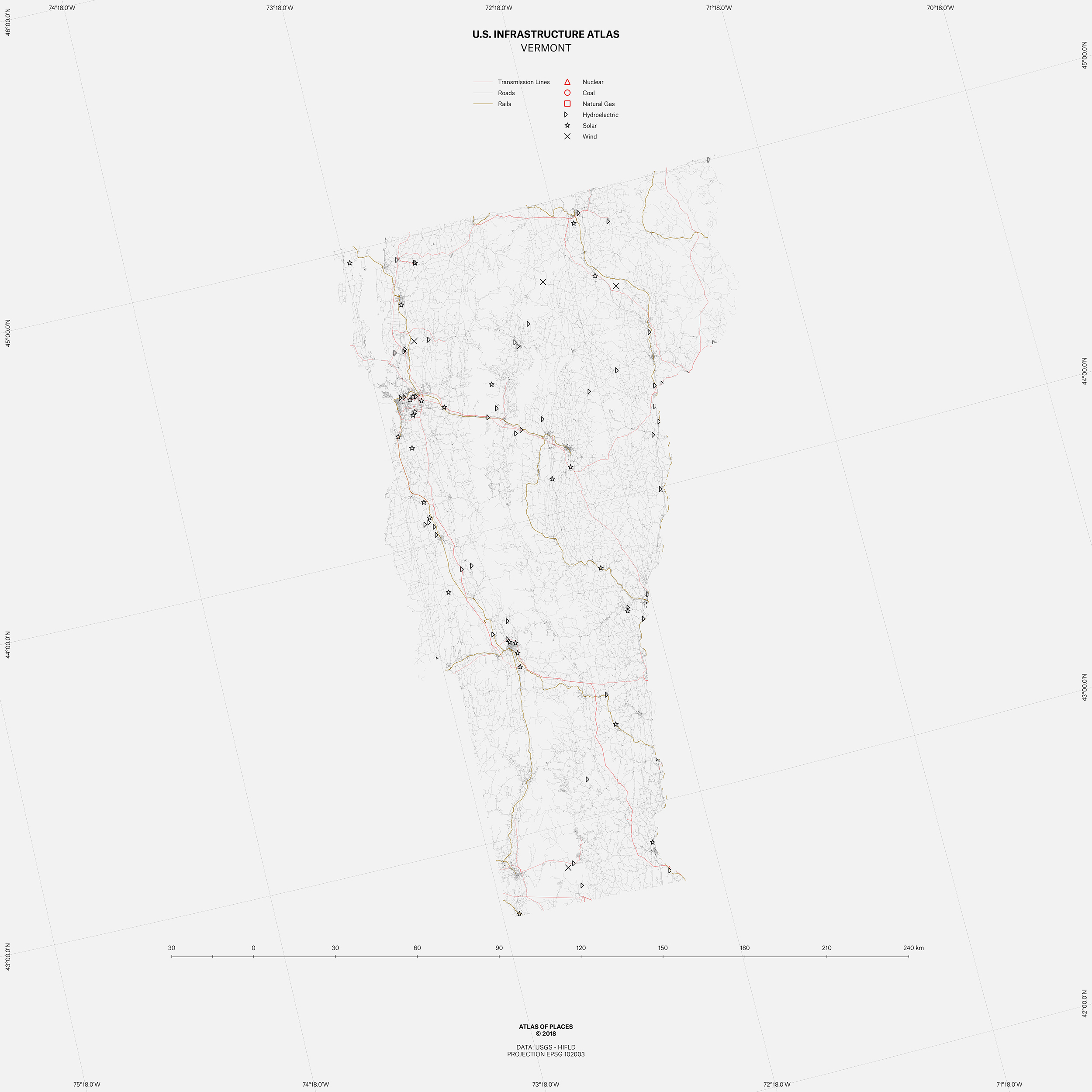
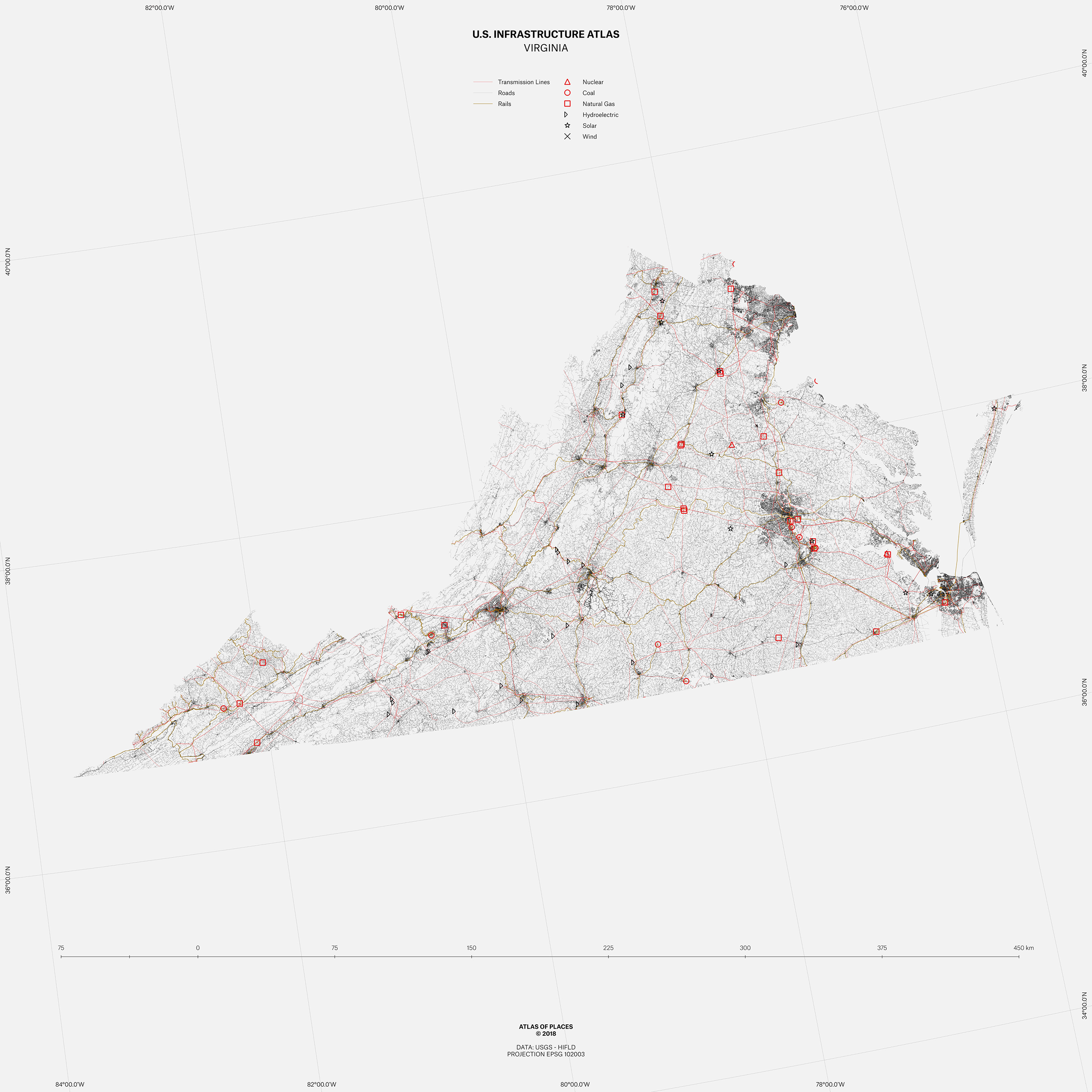
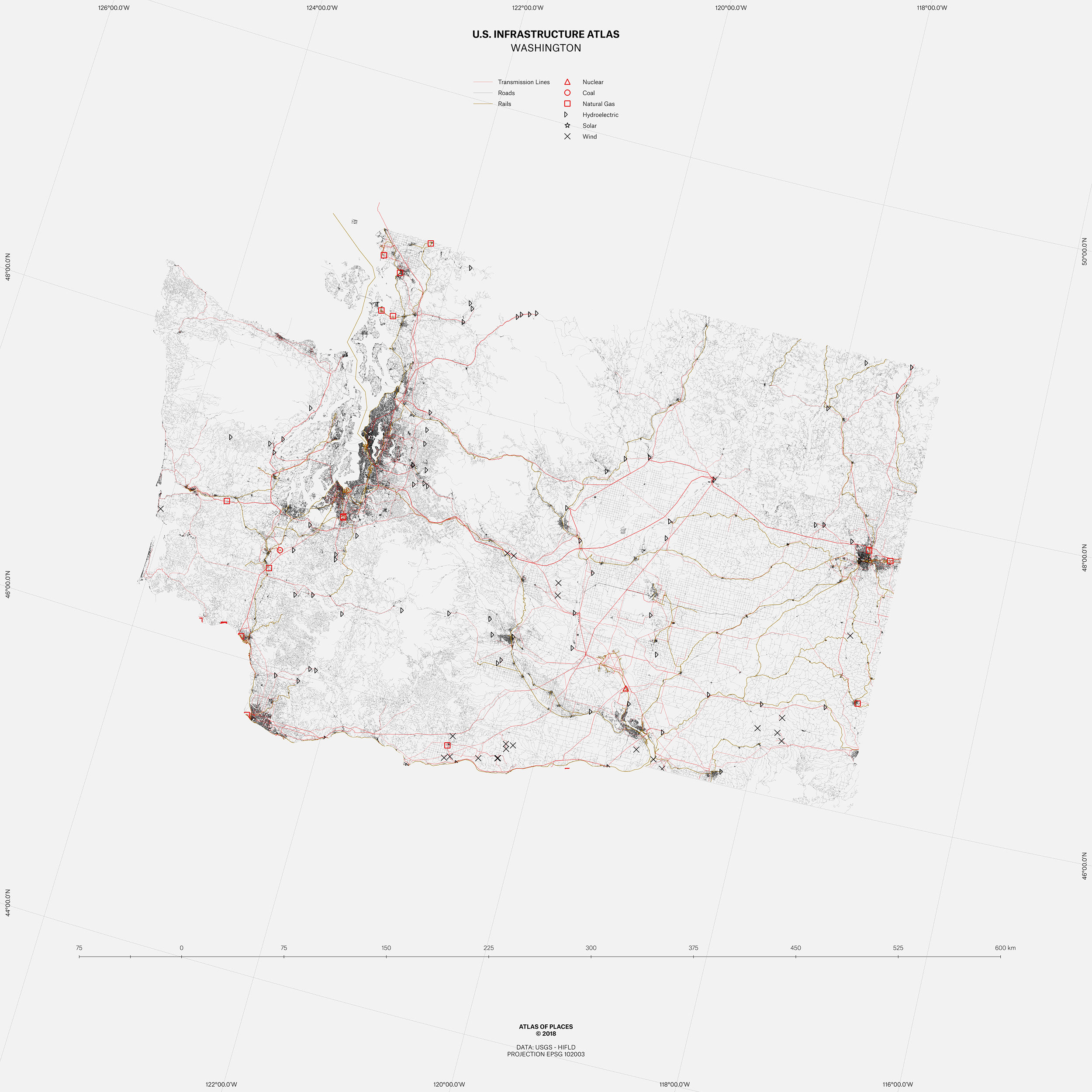
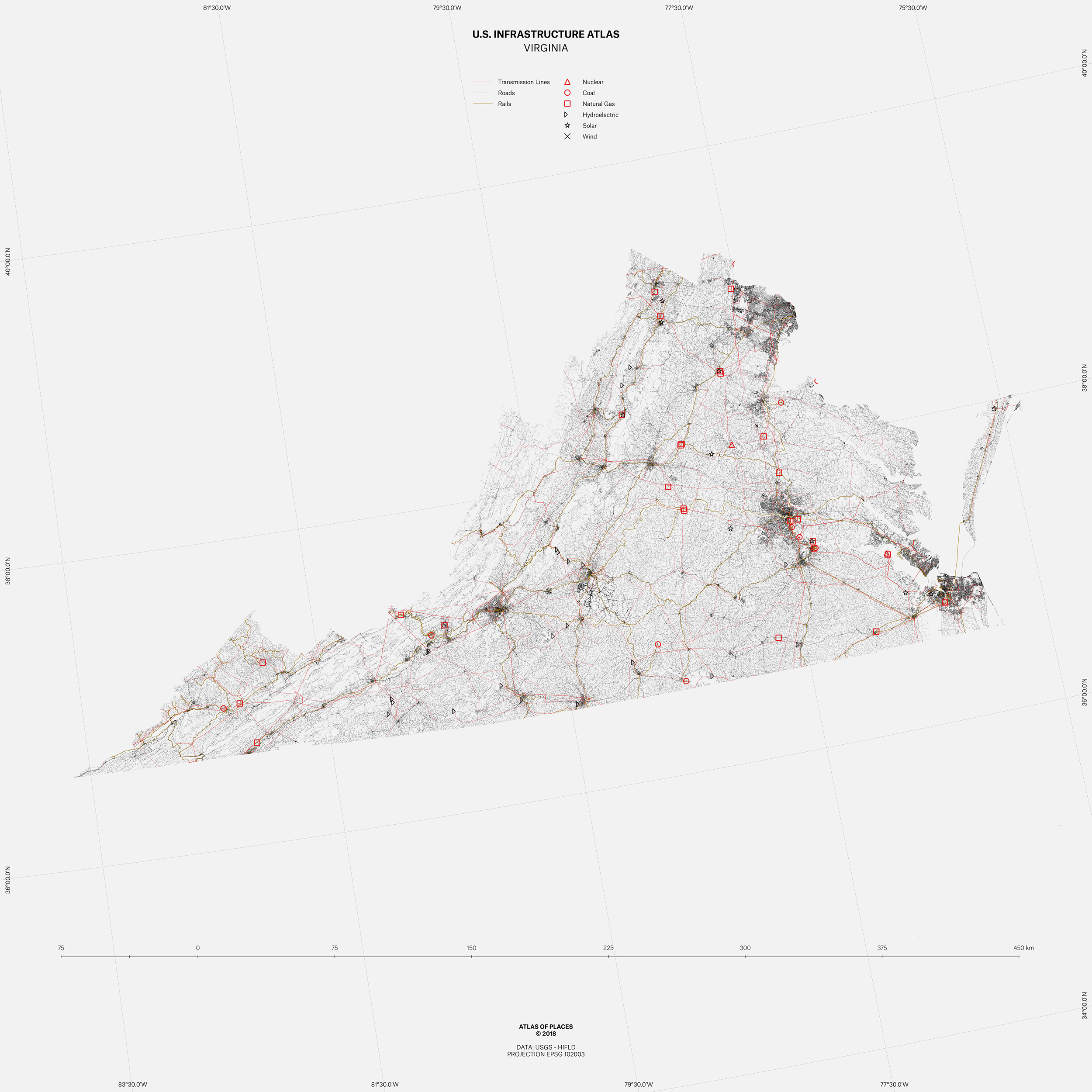
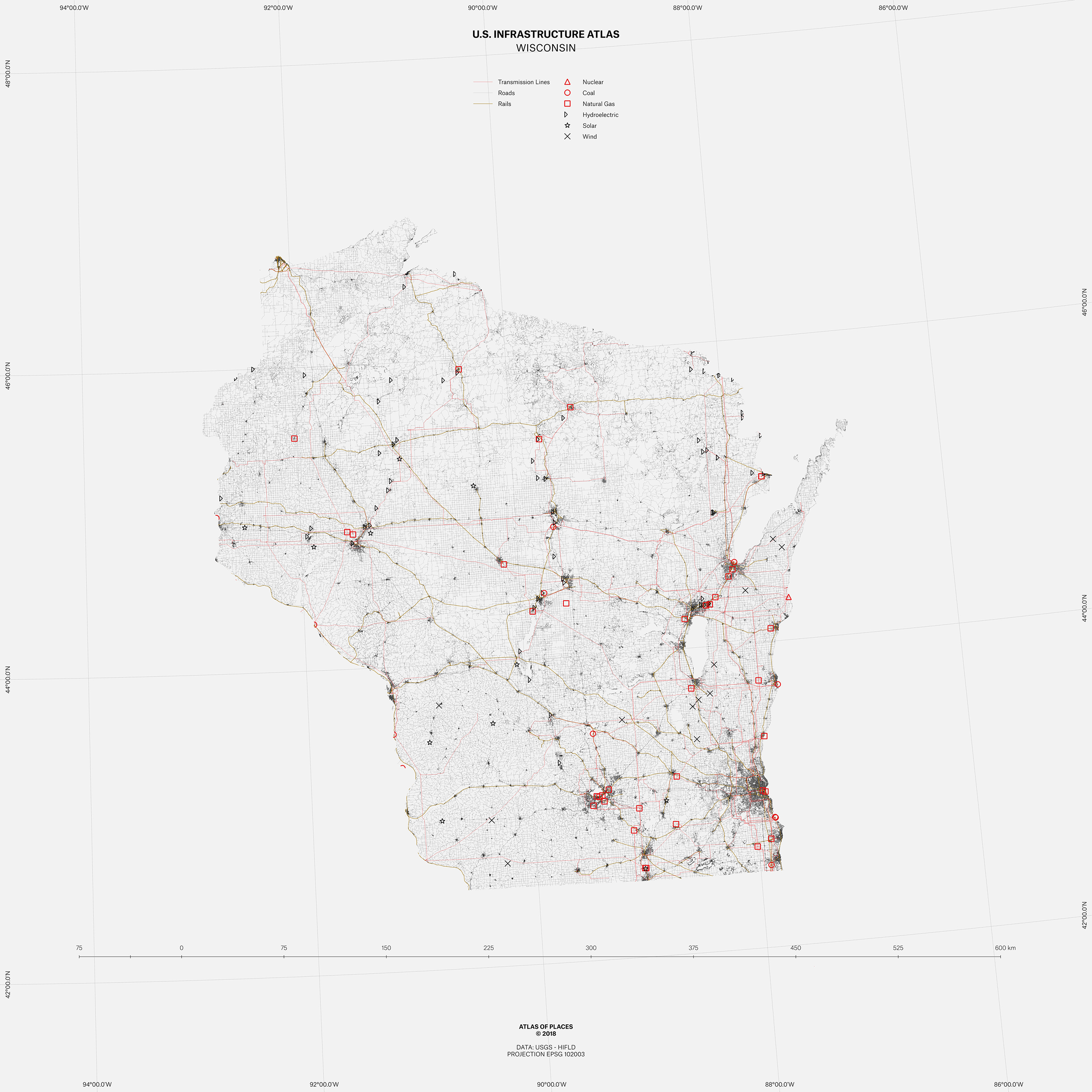
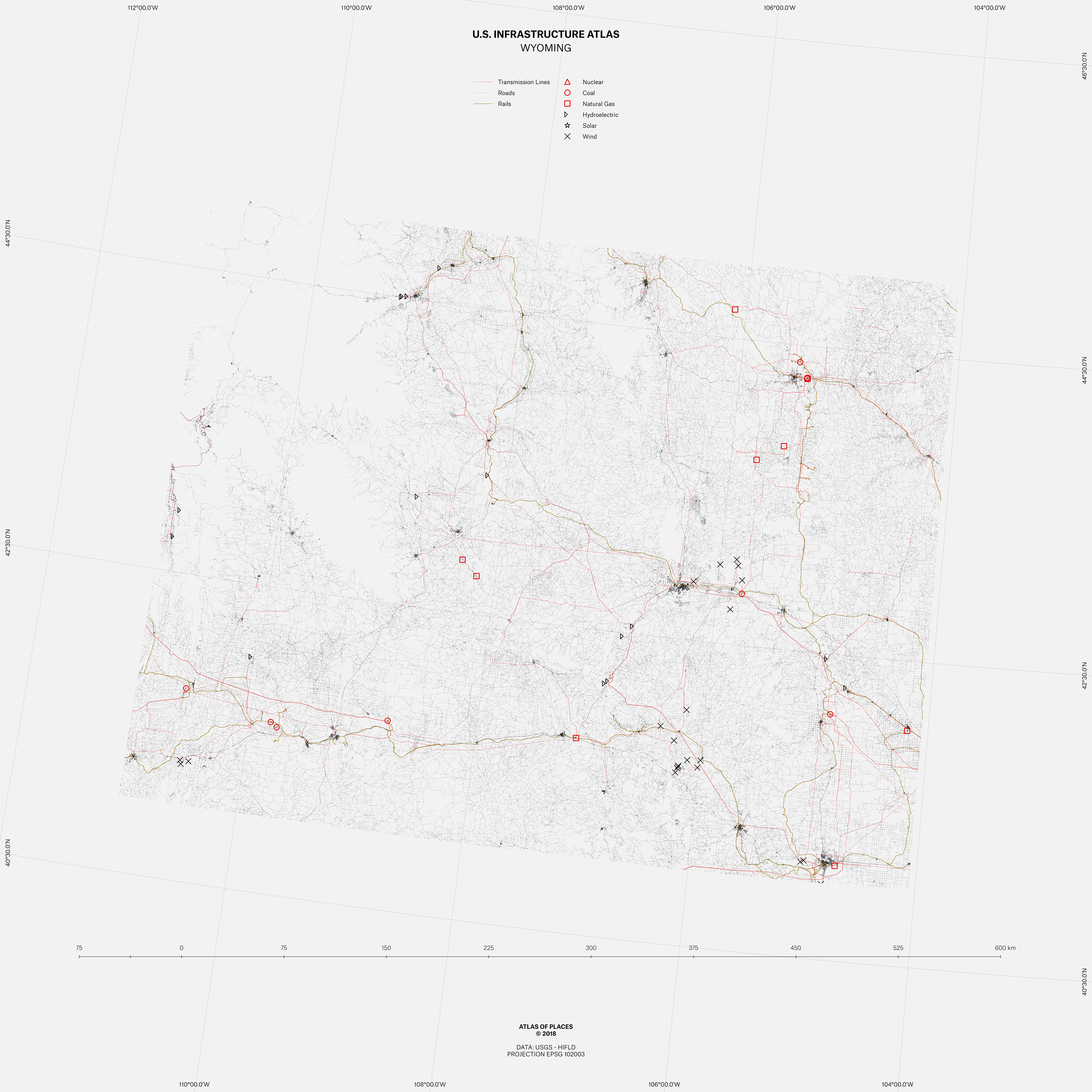
Lieu: USA
Data: USGS - HIFLD
Projection: EPSG 102003
Text: Paul N. Edwards, Infrastructure and Modernity, 2003
Publié: Avril 2018
Catégorie: Observation